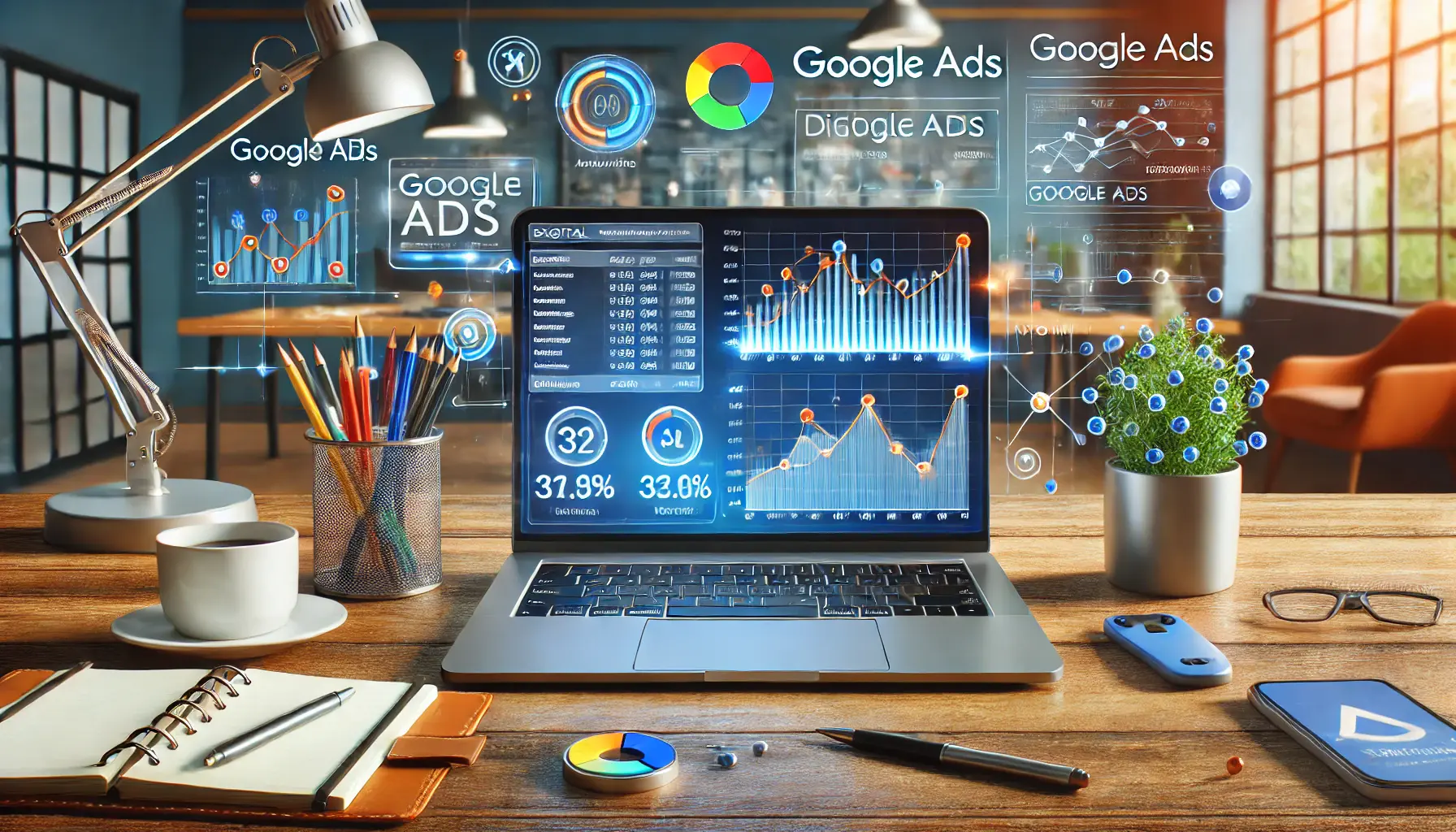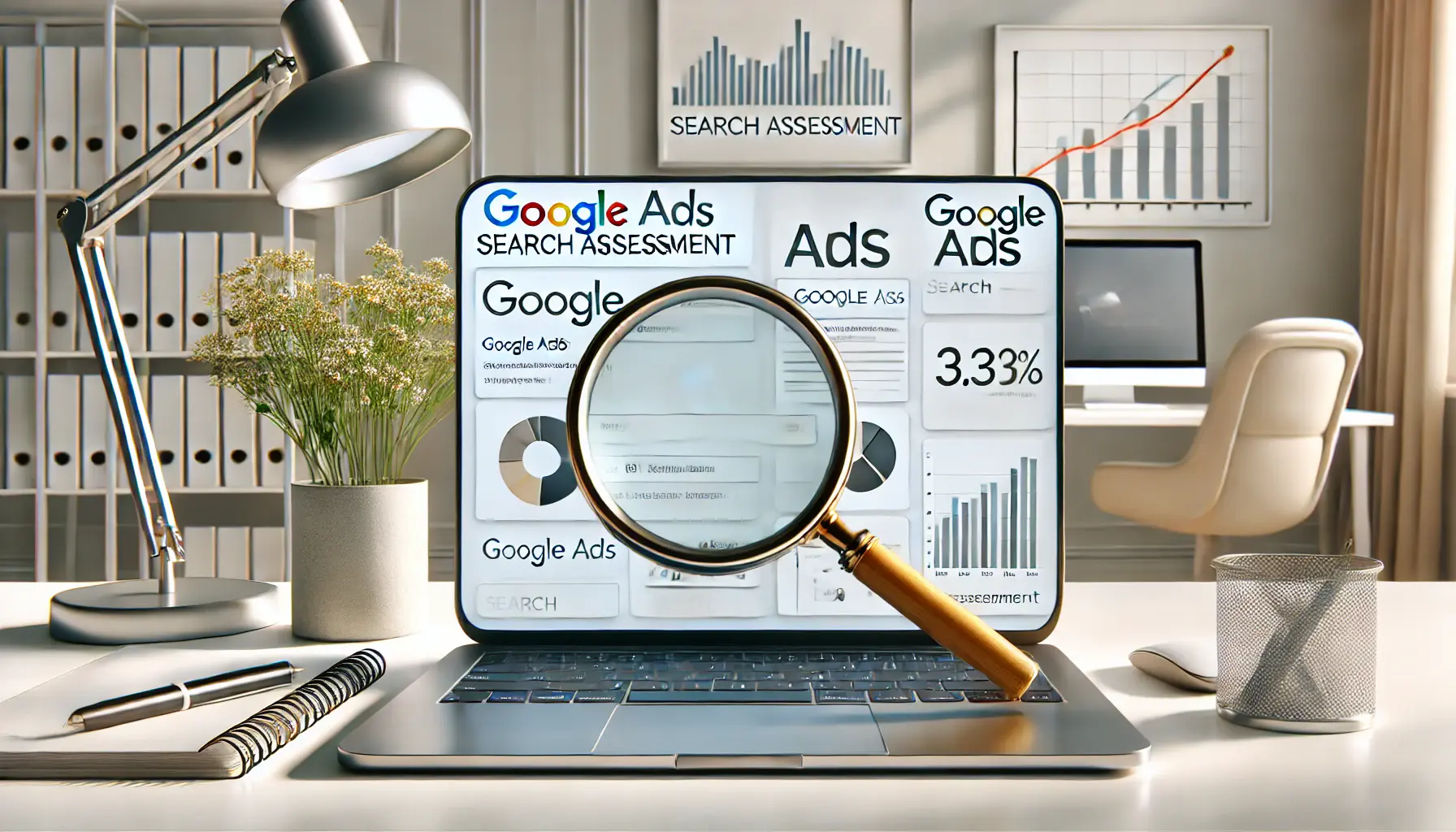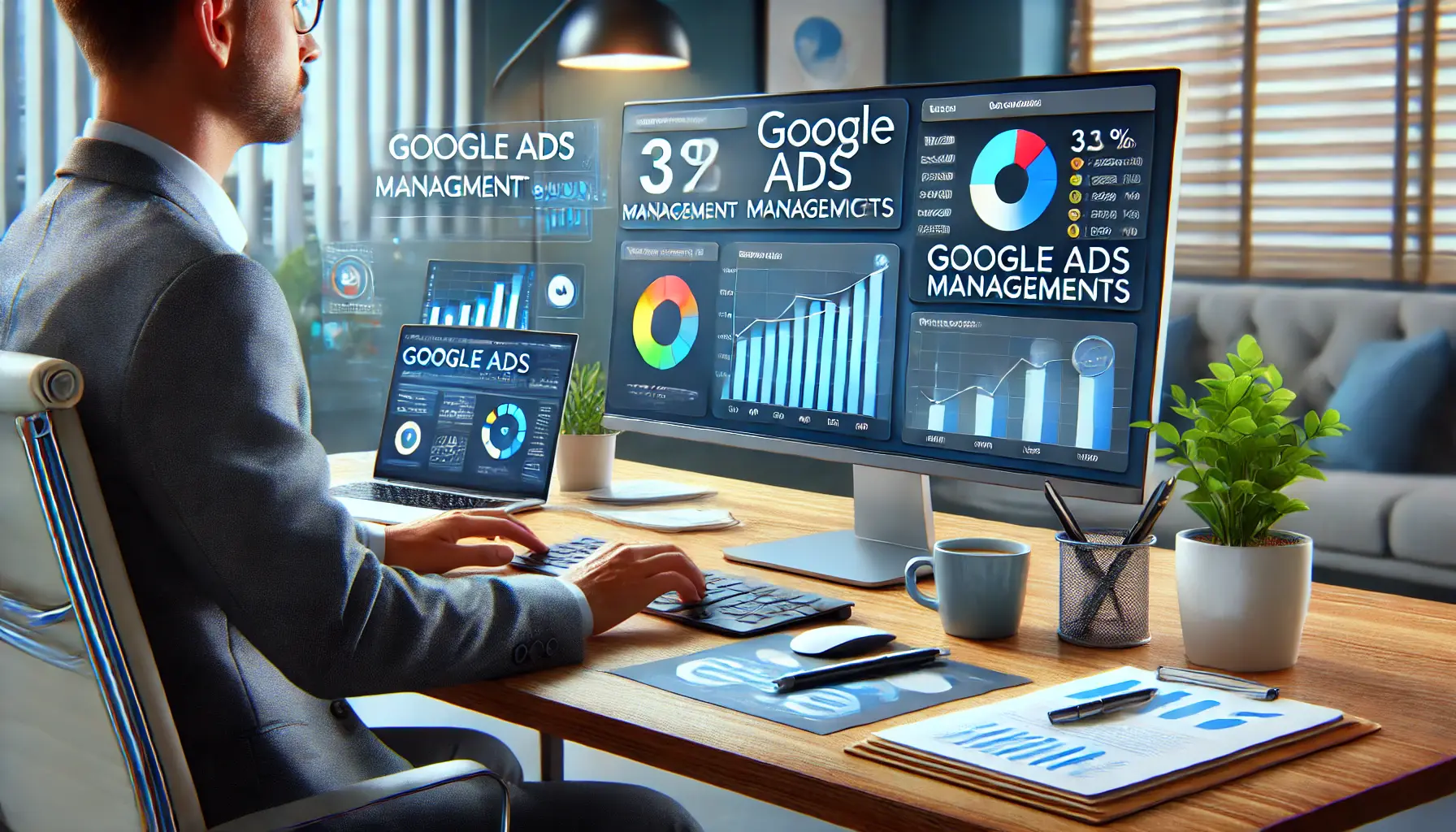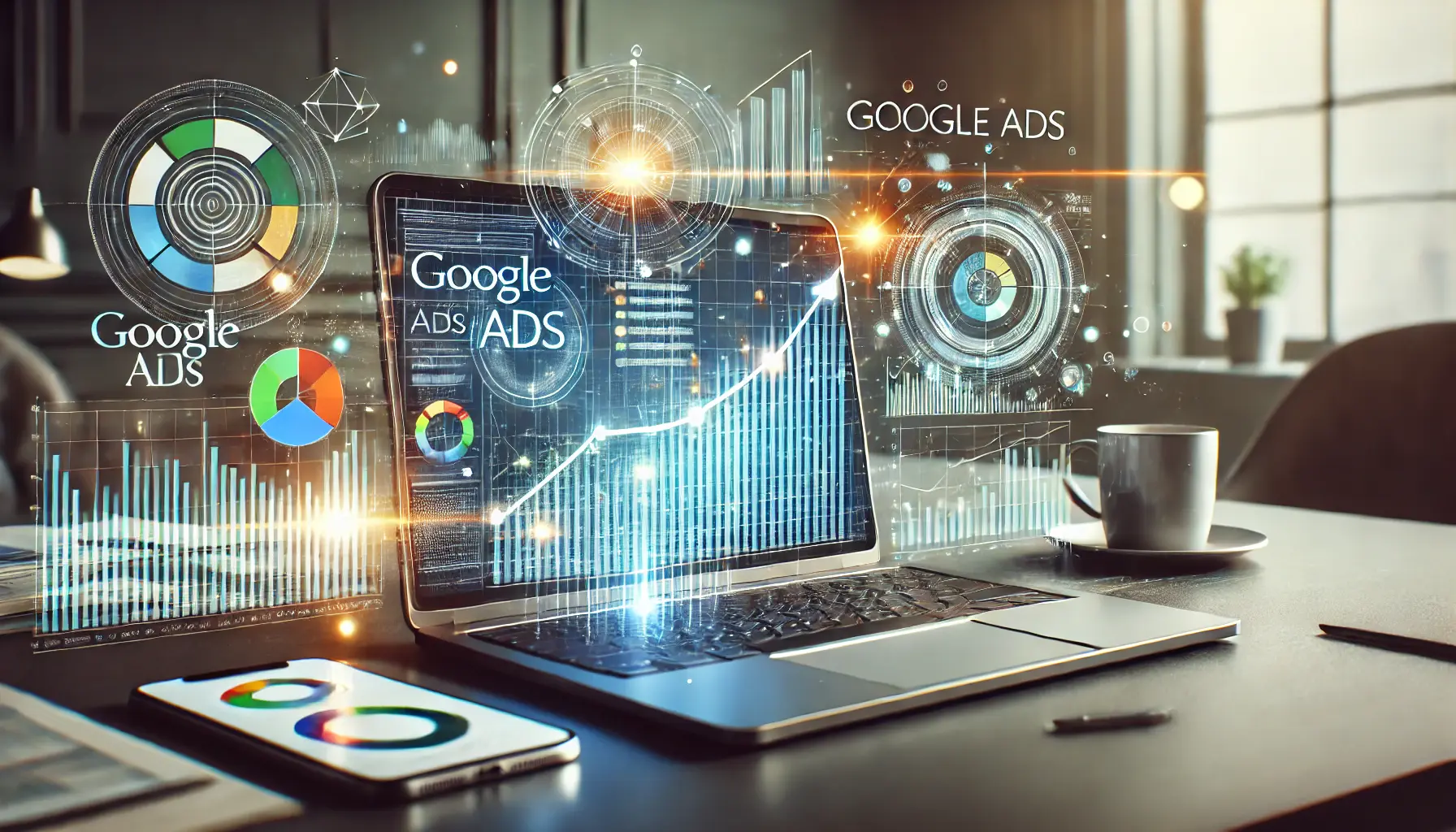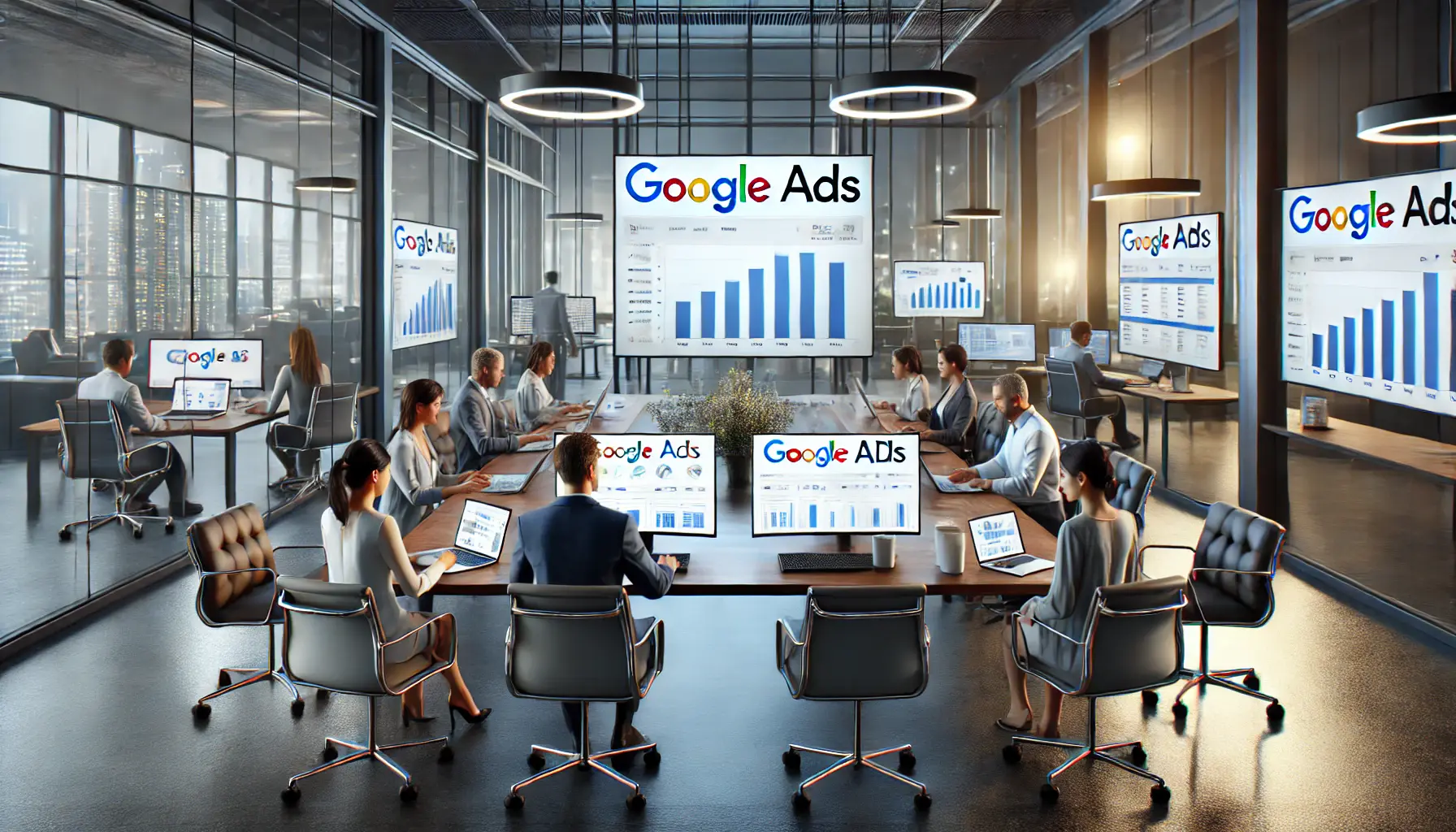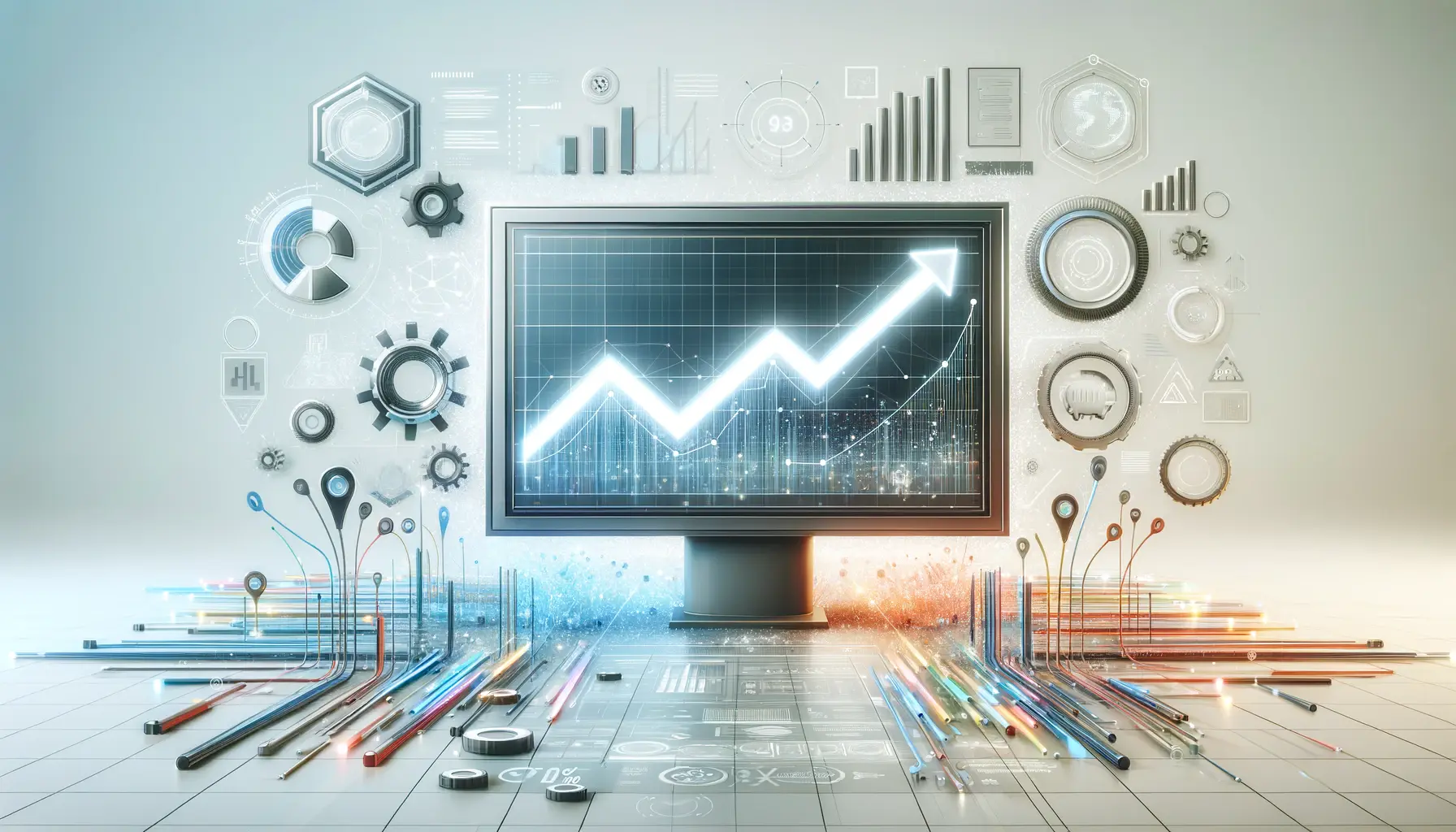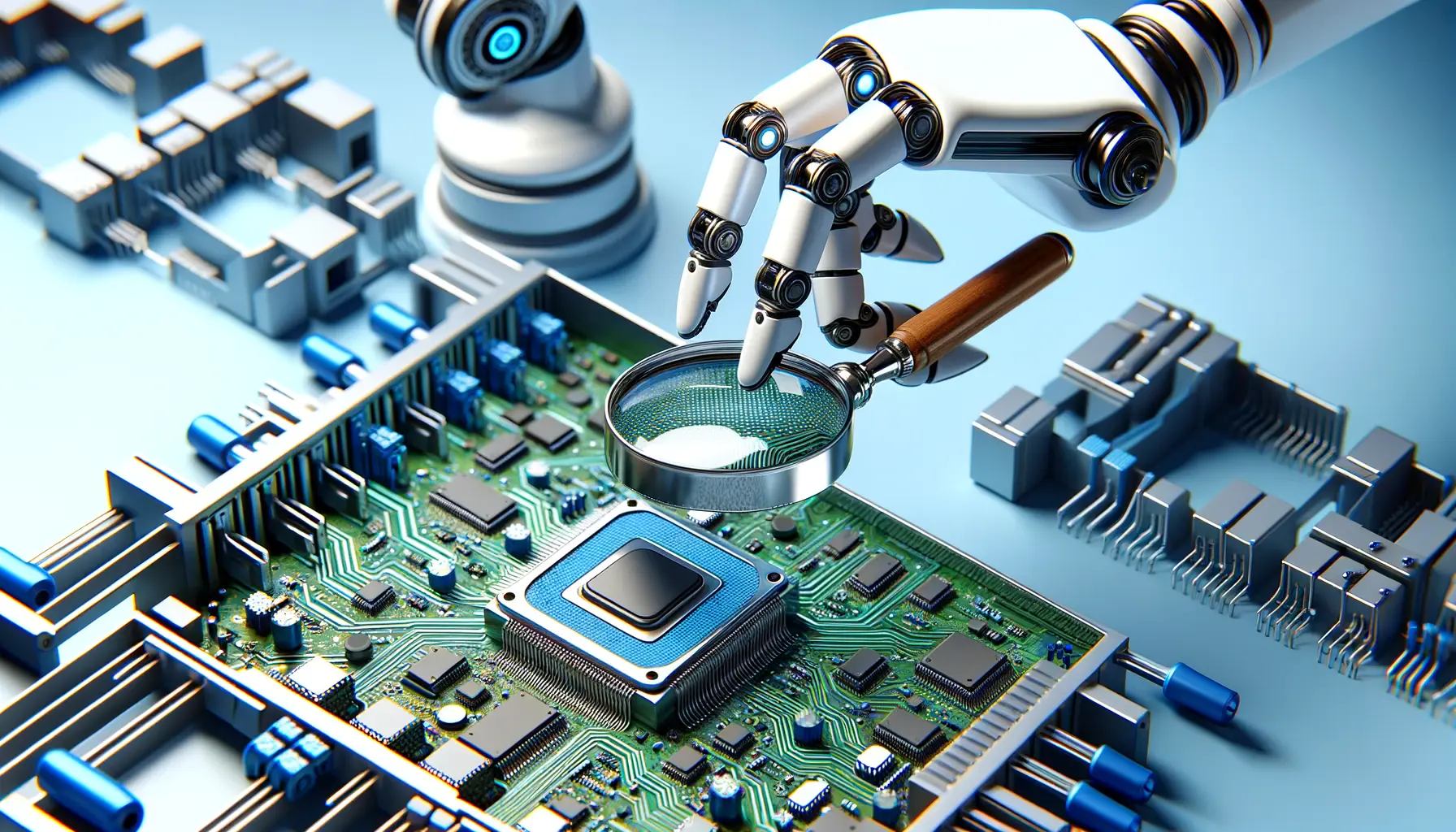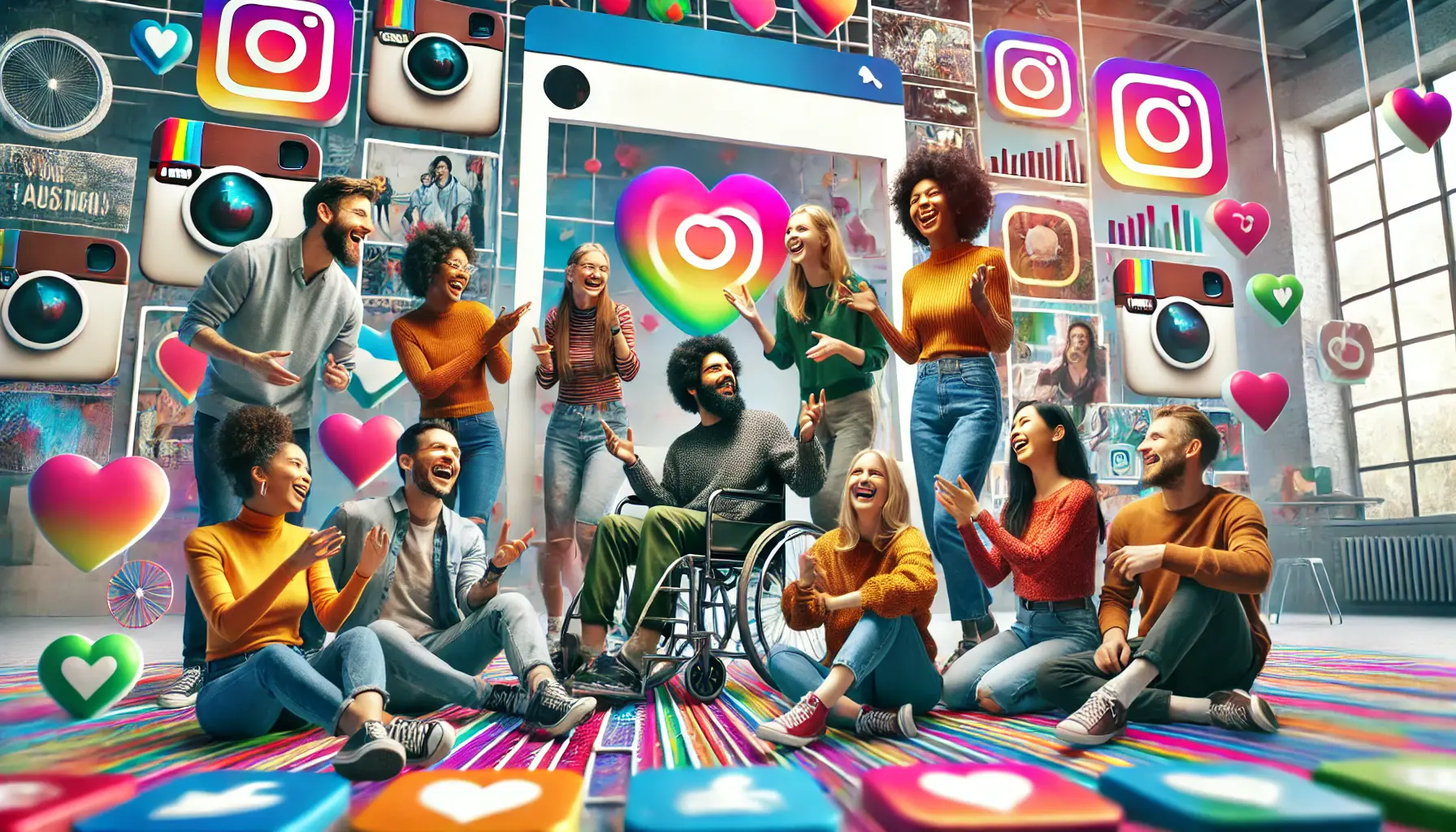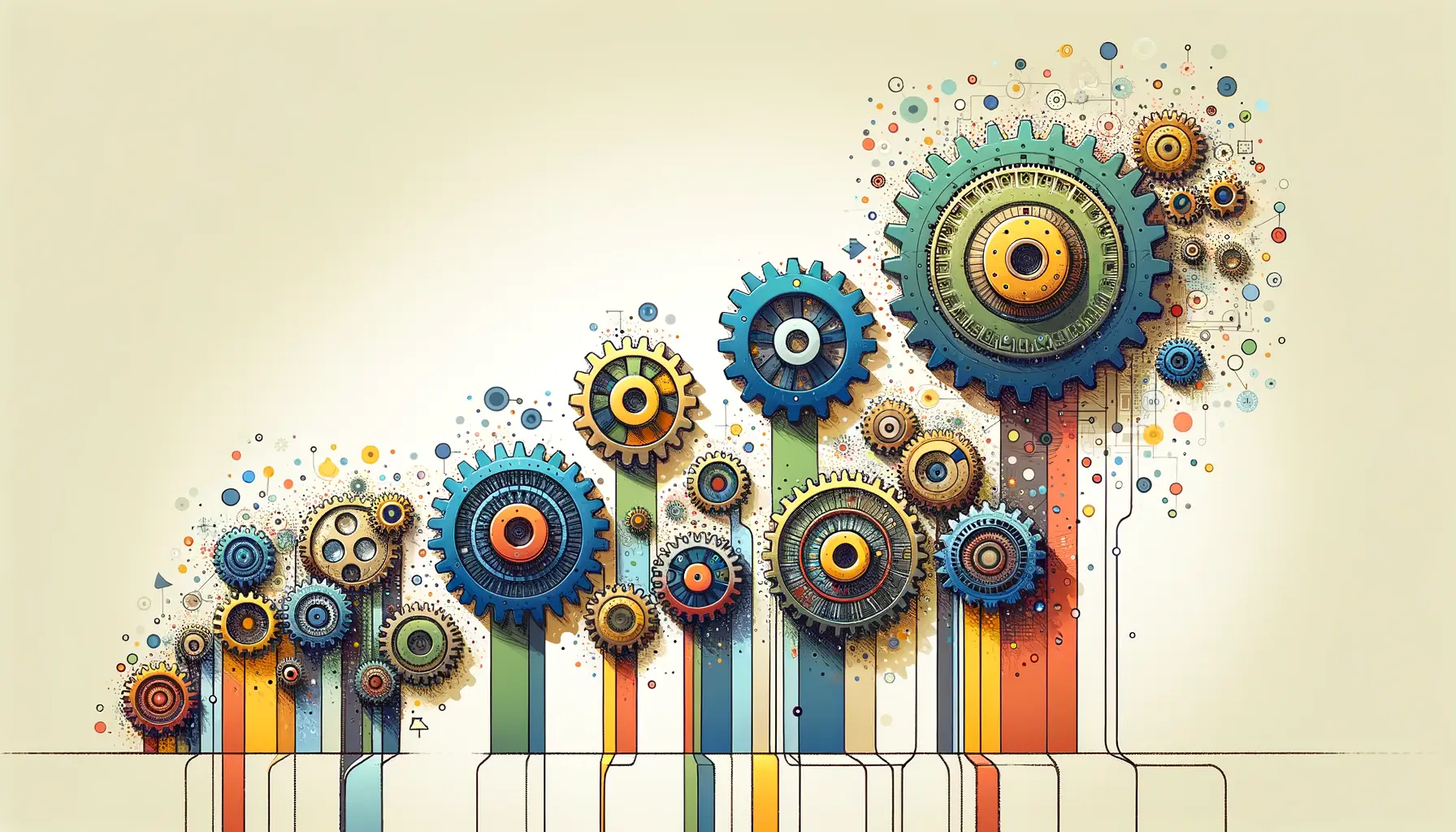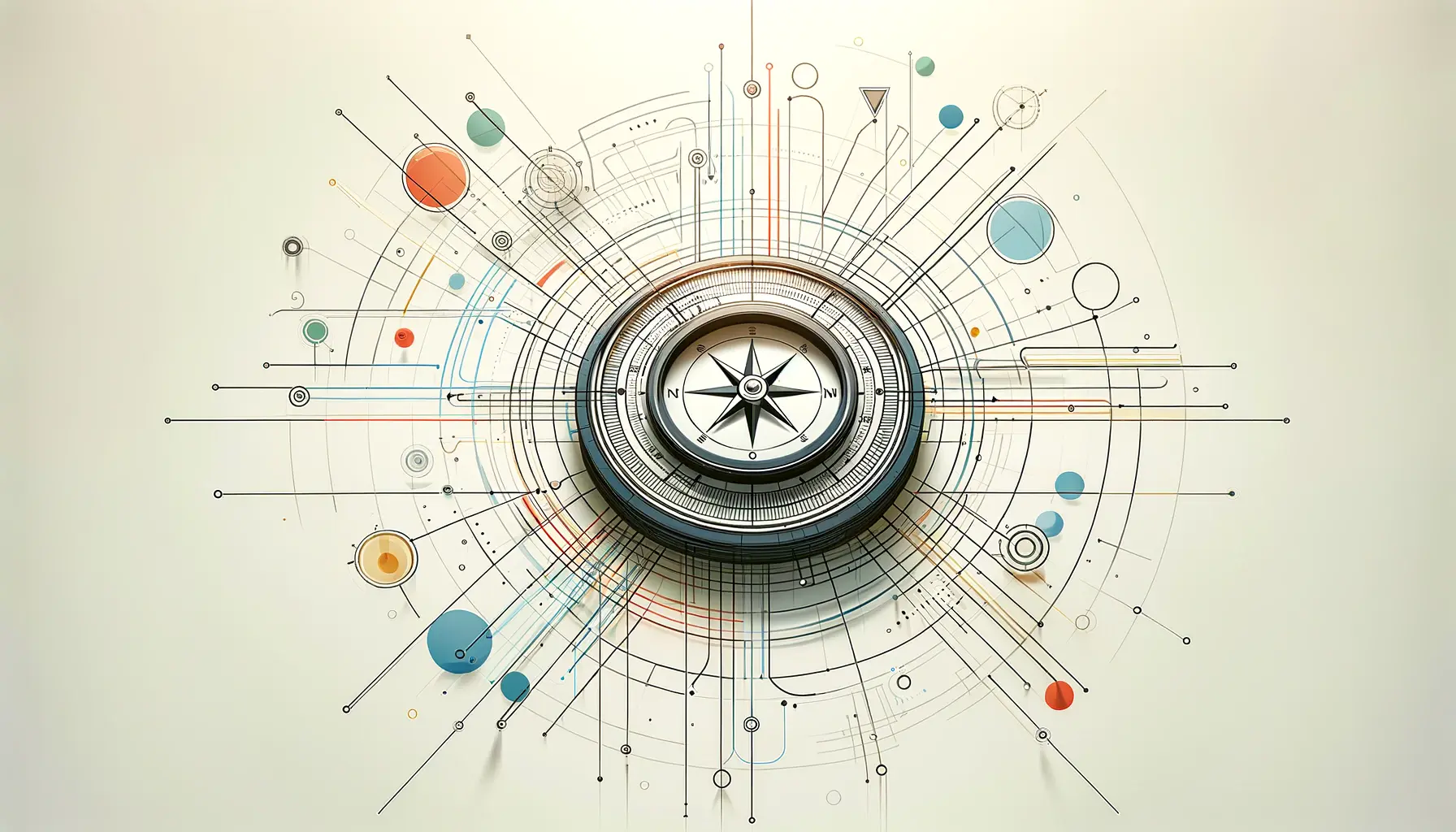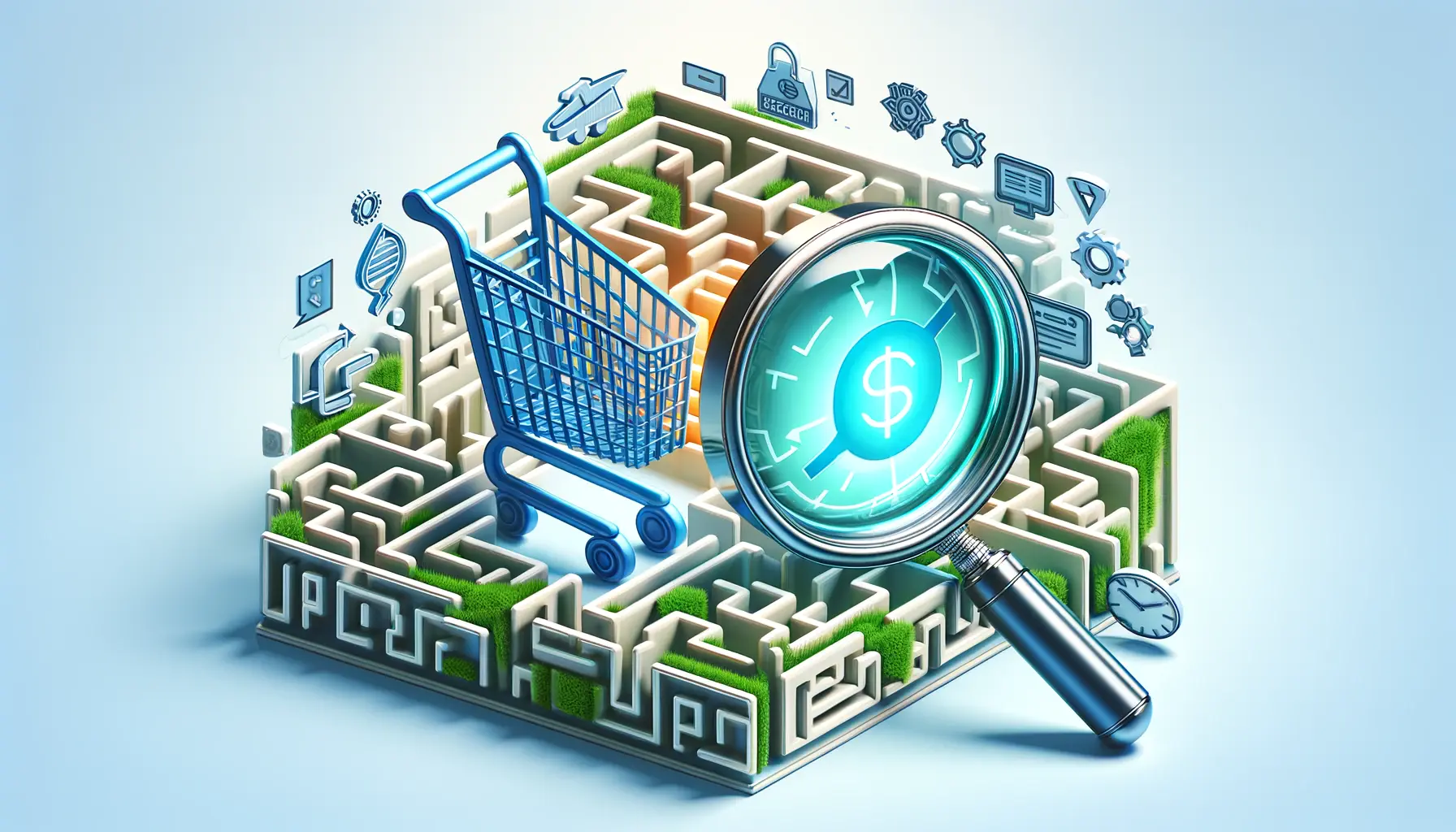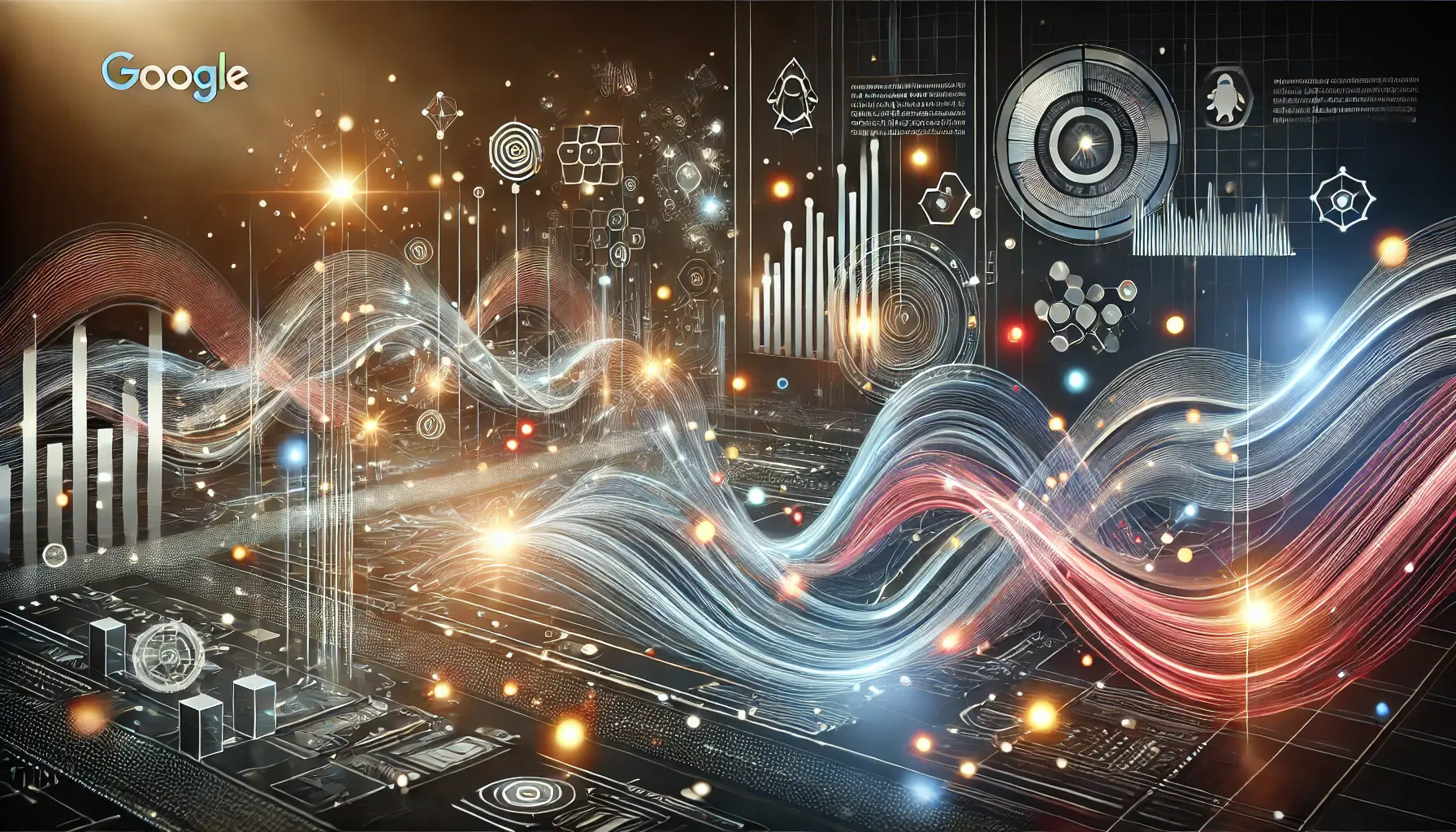In today’s fast-paced digital marketing world, businesses are always trying to implement a plethora of ways to amplify their reach and increase effectiveness.
One of the most powerful tools at any marketer’s disposal is Google AdsAn online advertising platform developed by Google, allowing businesses to display ads to users based on keywords and search behavior..
The ease with which ad campaigns can be managed has been further enhanced with the use of automated solutions.
Automation in Google Ads has completely changed how businesses operate their campaigns.
This allows marketers to streamline work, optimize performance, and save valuable time.
But what exactly are these automated solutions, and how can they benefit your business?
- Introduction to Automated Solutions in Google Ads
- Types of Automated Solutions Available in Google Ads
- How to Effectively Deploy Automated Solutions
- Challenges and Pitfalls of Google Ads Automation
- Future Trends in Google Ads Automation
- Automated Solutions: The Future of Google Ads
- Automated Solutions in Google Ads: FAQs
Introduction to Automated Solutions in Google Ads
As digital marketing evolves each year, automation has become essential for any successful Google Ads campaign.
Automated solutions refer to a variety of tools and features offered by Google Ads, which help manage different aspects of your campaign.
From bidding strategies to ad creation, these solutions help marketers reduce manual tasks while maximizing ad delivery.
But why should you adopt automated solutions in your Google Ads campaigns?
Let’s break that down.
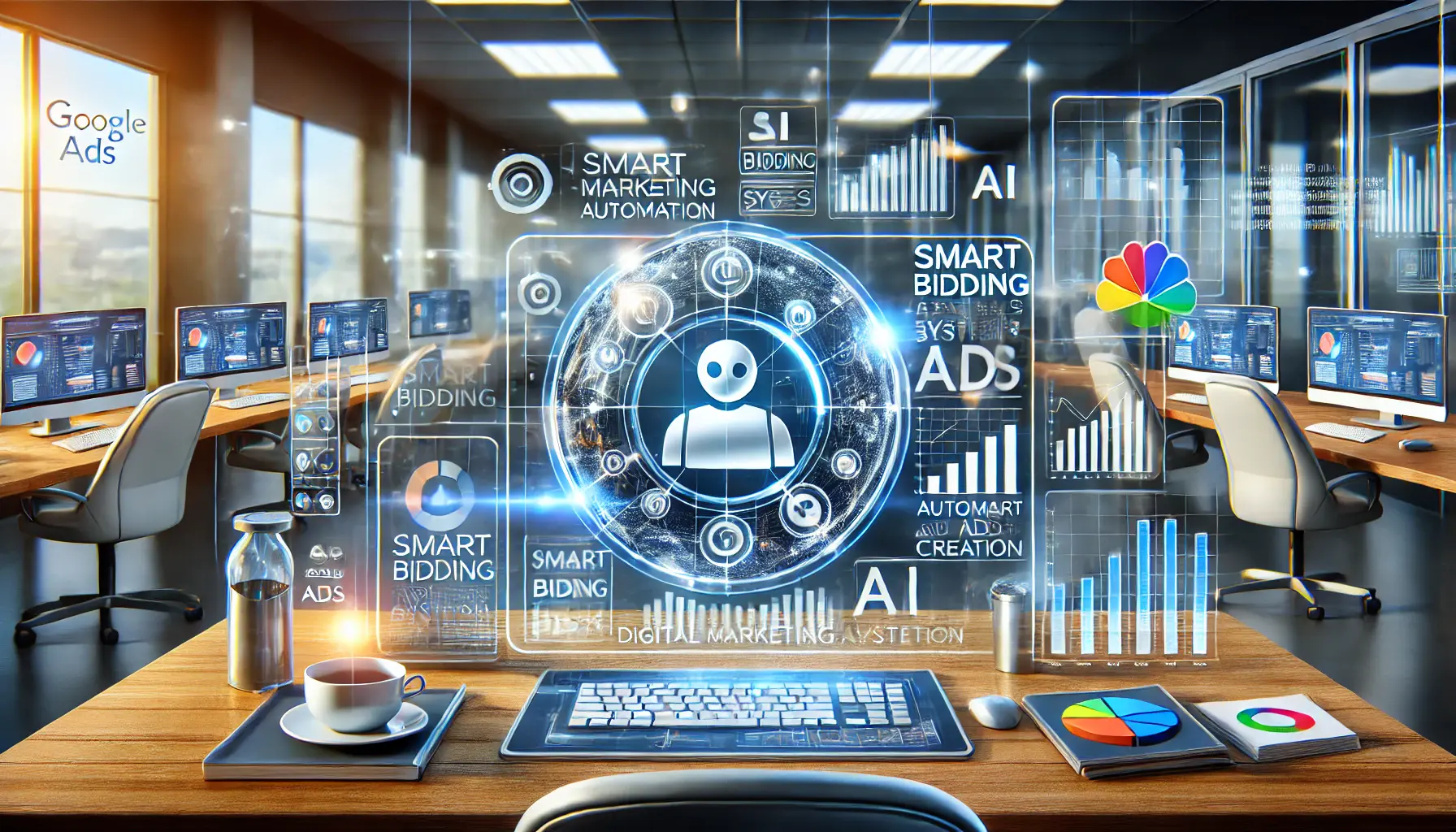
An advanced digital workspace illustrating the role of AI-driven tools and smart systems in Google Ads automation.
What are Automated Solutions?
Automated solutions are a collection of tools within Google Ads that handle routine tasks such as bidding, ad targeting, and even content creation.
These tools use data-driven algorithms to make real-time decisions, boosting the performance of your ads with minimal effort from your side.
Whether you’re running a small business or managing several campaigns, automation keeps you ahead in the marketing game.
- They utilize sophisticated algorithms to adjust bids based on performance data.
- They automatically create ads that align with your campaign goals.
- They help determine the right audience based on search behavior and preferences.
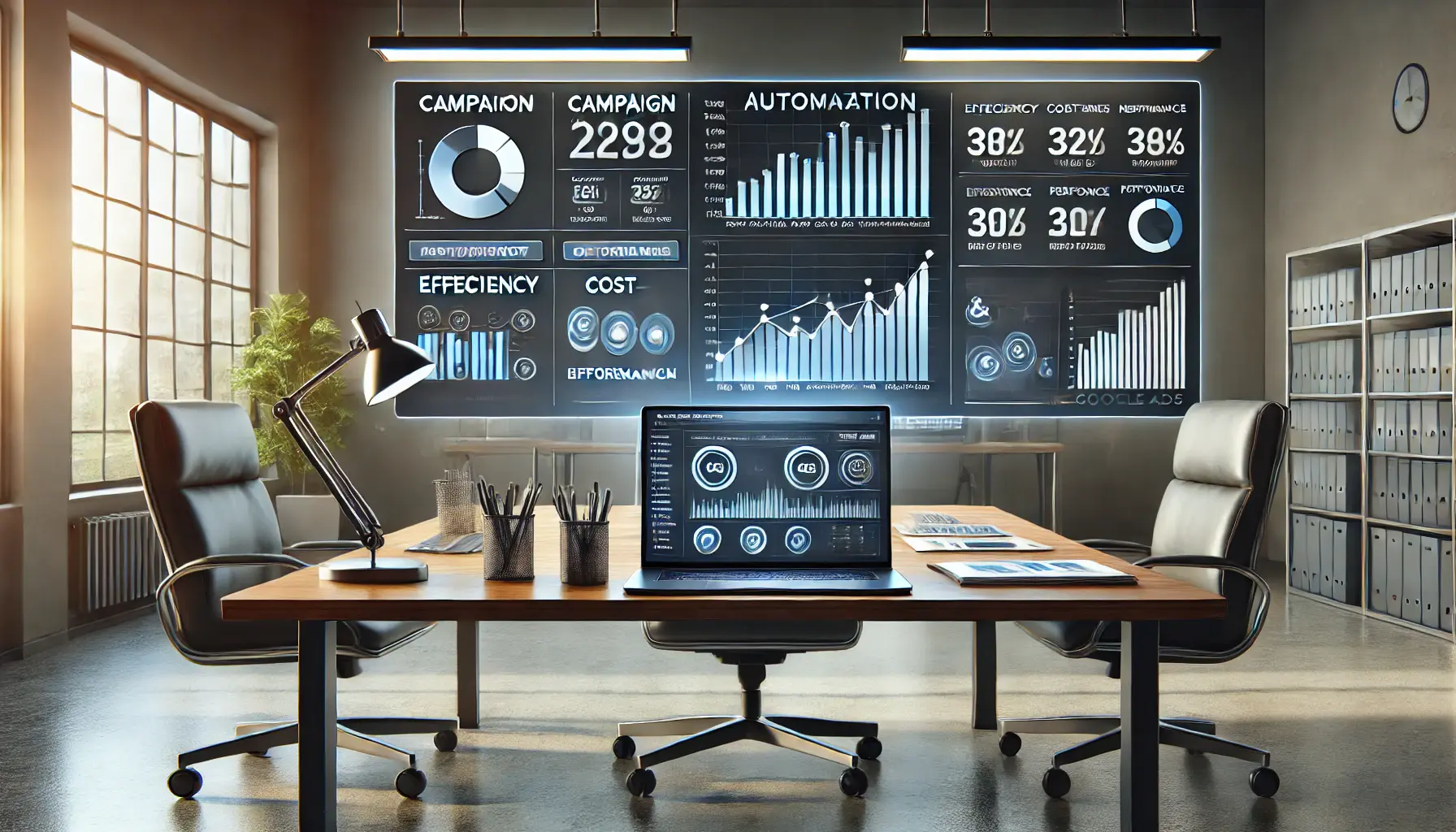
A professional workspace highlighting the efficiency, scalability, and cost-effectiveness of using automation in Google Ads campaigns.
Benefits of Using Automation in Google Ads
There are several compelling reasons to incorporate automated solutions into your Google Ads strategy:
- Efficiency: Automation saves time by handling repetitive tasks such as adjusting bids and placing ads.
- Optimization: With real-time data analysis, automated solutions can optimize your campaigns better than manual methods.
- Scalability: As your business grows, automation allows you to manage larger campaigns with ease.
- Cost-Effectiveness: By constantly analyzing performance, automated solutions help you make the most of your advertising budget.
In conclusion, automated solutions in Google Ads are designed to make your advertising more effective and efficient.
Whether you’re just getting started or looking to improve existing campaigns, embracing automation can be a game changer for your business.
Automated solutions simplify Google Ads campaigns by reducing manual work and maximizing ad performance.
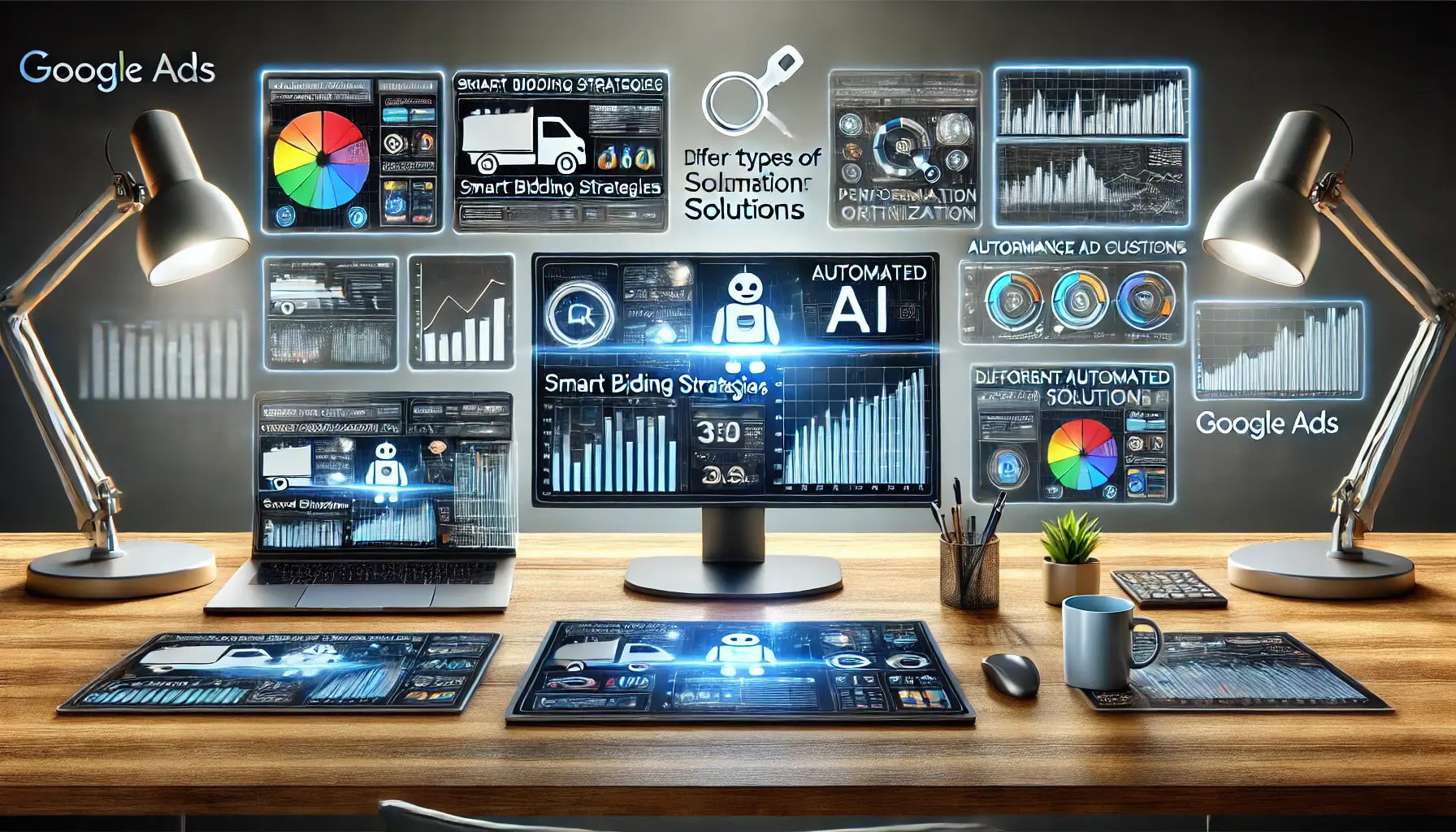
A dynamic workspace showcasing the integration of different automated solutions available in Google Ads, including smart bidding, automated ad creation, and real-time performance optimization.
Types of Automated Solutions Available in Google Ads
Google Ads offers a variety of automated solutions that can greatly help marketers improve their campaigns.
These automated solutions take care of tasks that often require significant time and frequent monitoring.
By utilizing these tools, marketers can enhance their results while focusing on higher-level strategies and the creative aspects of their campaigns.
Let’s explore the main types of automated solutions available in Google Ads.
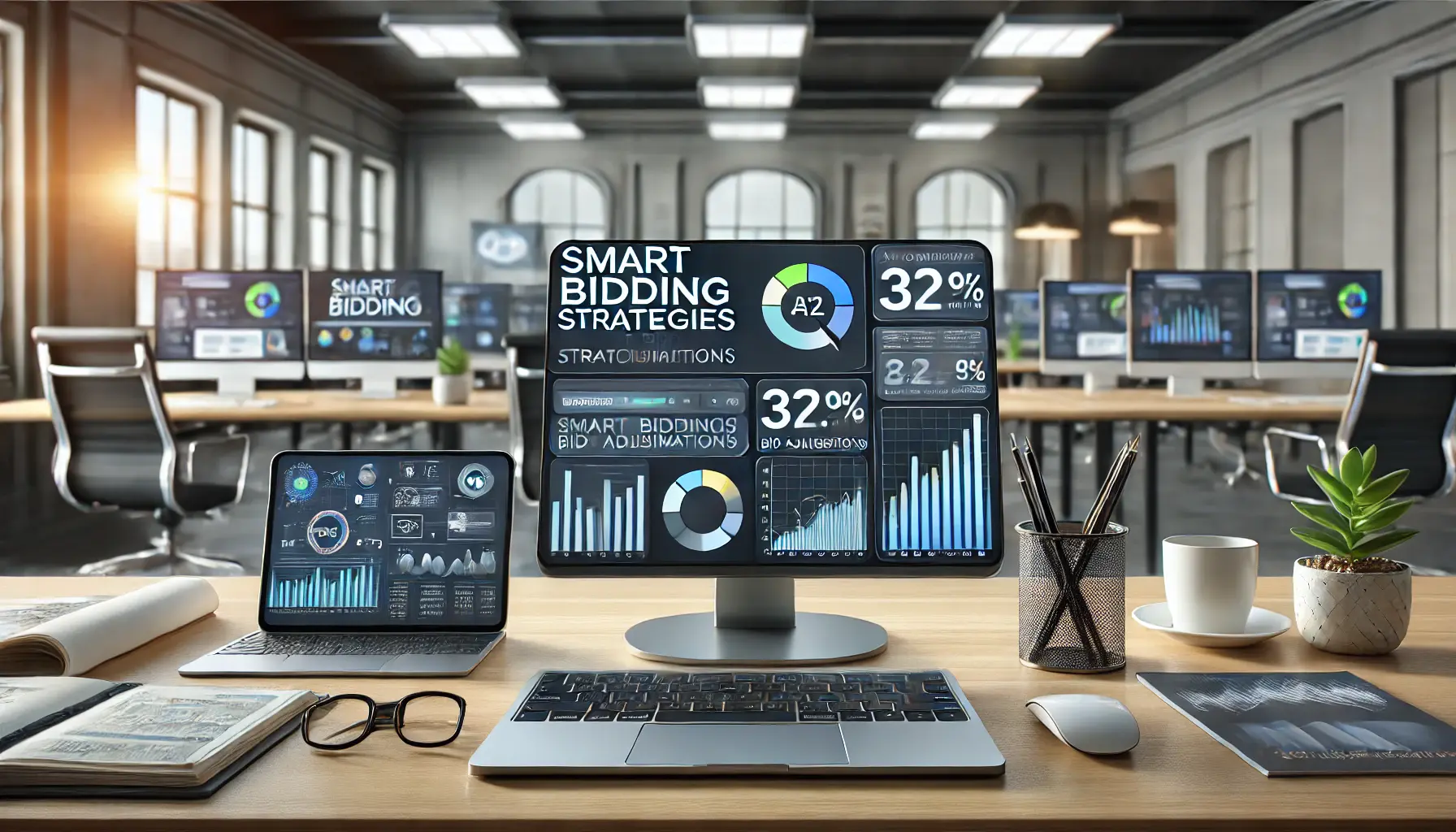
A professional workspace displaying smart bidding strategies in Google Ads, featuring bid optimization tools and data-driven decision-making processes.
Smart Bidding Strategies
One of the most powerful tools in Google Ads automation is Smart BiddingA Google Ads feature that uses machine learning to optimize bids for conversions or conversion value in real-time..
This set of automated bid strategies uses machine learning to optimize bids for conversions or conversion value in every auction—a feature known as “auction-time bidding.” Smart Bidding strategies include Target CPAA bidding strategy in Google Ads that automatically adjusts bids to achieve the most conversions at your desired cost per acquisition., Target ROASA bidding strategy in Google Ads that optimizes bids to achieve a targeted return on ad spend (ROAS)., Maximize ConversionsA Smart Bidding strategy that sets bids to get the highest possible number of conversions within a given budget., and Maximize Conversion ValueA bidding strategy that focuses on maximizing the total conversion value rather than the number of conversions..
- Target CPA: Automatically sets a bid for each auction to get the most conversions at your desired cost per acquisition.
- Target ROAS: Automatically adjusts bids to maximize revenue based on your desired return on ad spend (ROAS).
- Maximize Conversions: Sets bids to achieve the highest possible number of conversions within your budget, ideal for scaling campaigns quickly.
- Maximize Conversion Value: Optimizes for total conversion value rather than the number of conversions, helping you get the most value from your campaigns.
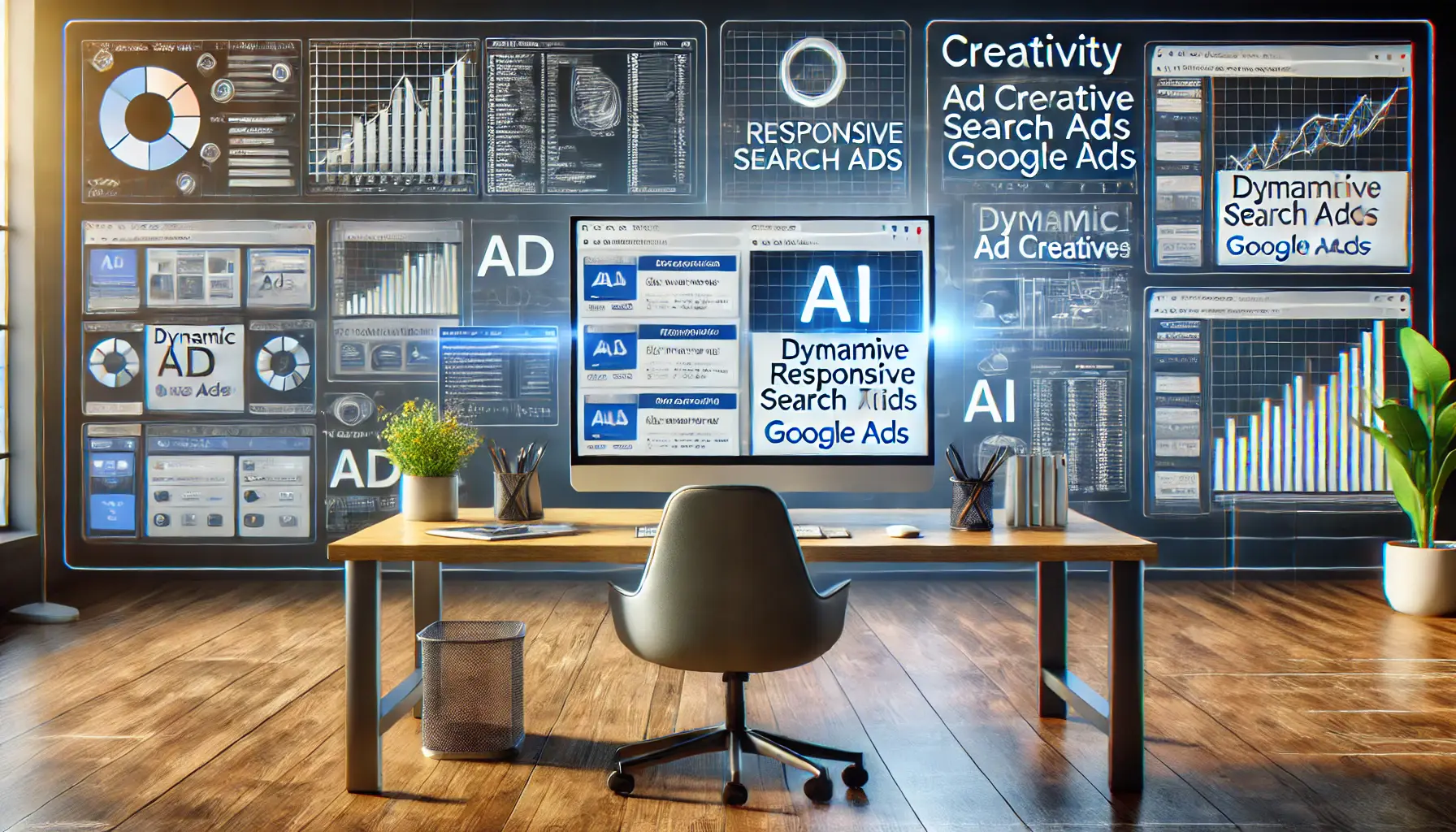
A creative workspace displaying how automated tools generate and test different ad formats in Google Ads, emphasizing the power of automation in ad creation.
Automated Ad Creatives
Building ad creatives that resonate with your audience can be time-consuming.
Google’s Responsive Search AdsAn ad format in Google Ads that automatically combines and tests multiple headlines and descriptions to find the best-performing ad. and Dynamic Search AdsAn ad type in Google Ads that automatically generates ad headlines based on the content of your website. simplify this process by automatically generating ad copy based on your assets and website content.
- Responsive Search Ads: Google automatically combines and rotates the headlines and descriptions you provide, testing multiple combinations to find the best-performing ads.
- Dynamic Search Ads: Google automatically generates ad headlines based on the content of your website to help fill gaps in keyword targeting.
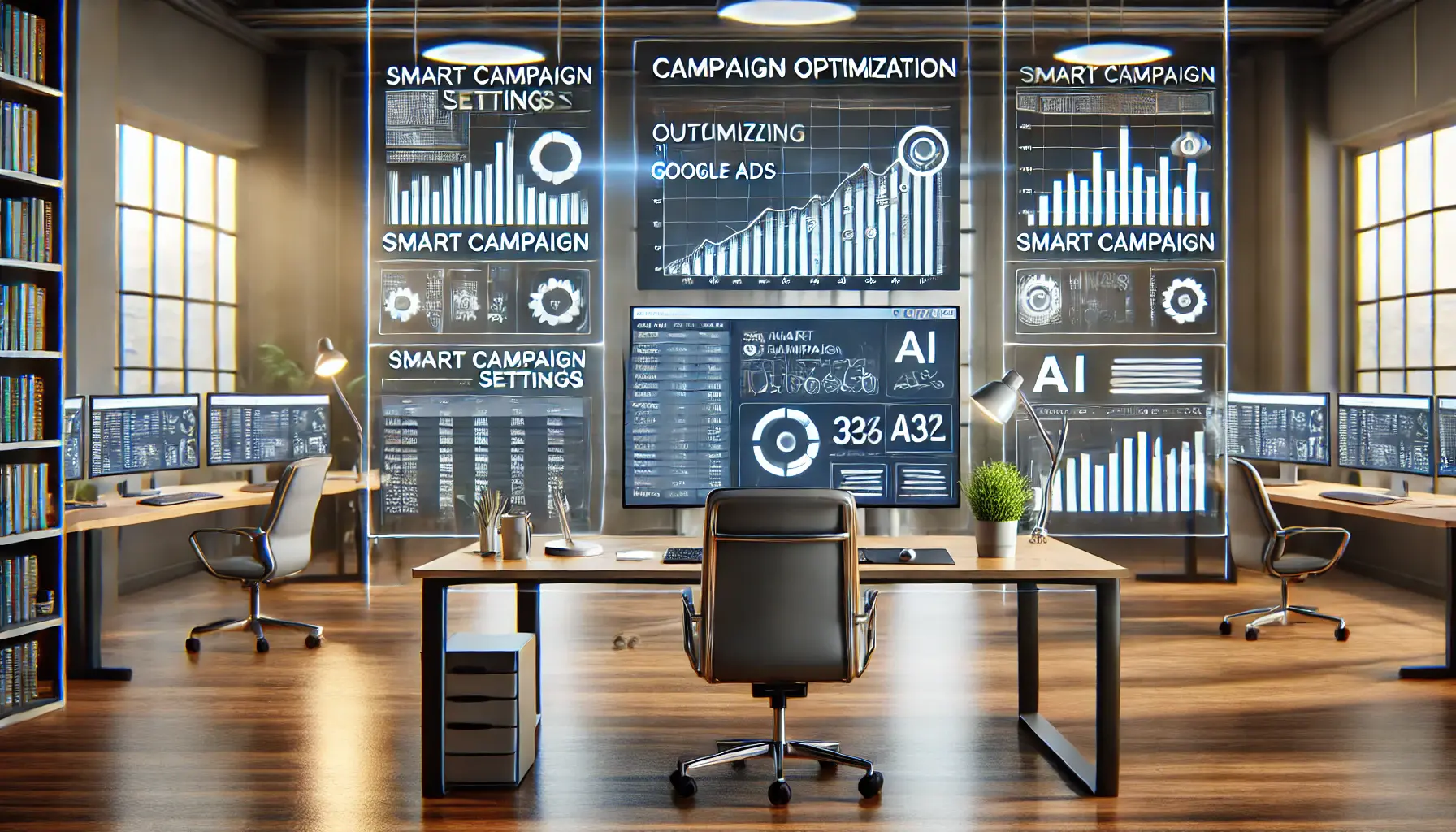
A high-tech workspace highlighting the process of campaign optimization through automation, showcasing performance improvements and AI-powered analytics.
Campaign Optimization via Automation
Automation doesn’t stop at bidding and ad creatives.
Google Ads provides tools that automatically optimize your campaigns over time to improve performance.
Campaigns like Smart Campaigns and Performance MaxA goal-based campaign type in Google Ads that provides access to all ad formats and inventory through a single campaign, optimized by machine learning. use automation for targeting, creative, and bidding to help you achieve your specific marketing goals.
- Smart Campaigns: Primarily designed for small businesses, Smart Campaigns automate much of the Google Ads process, including ad creation, audience targeting, and bid management.
- Performance Max: A goal-based campaign type that gives advertisers access to all of Google’s ad inventory through a single campaign. It uses machine learning to optimize bids, targeting, and creatives across platforms such as YouTube, Display, Search, and Gmail.
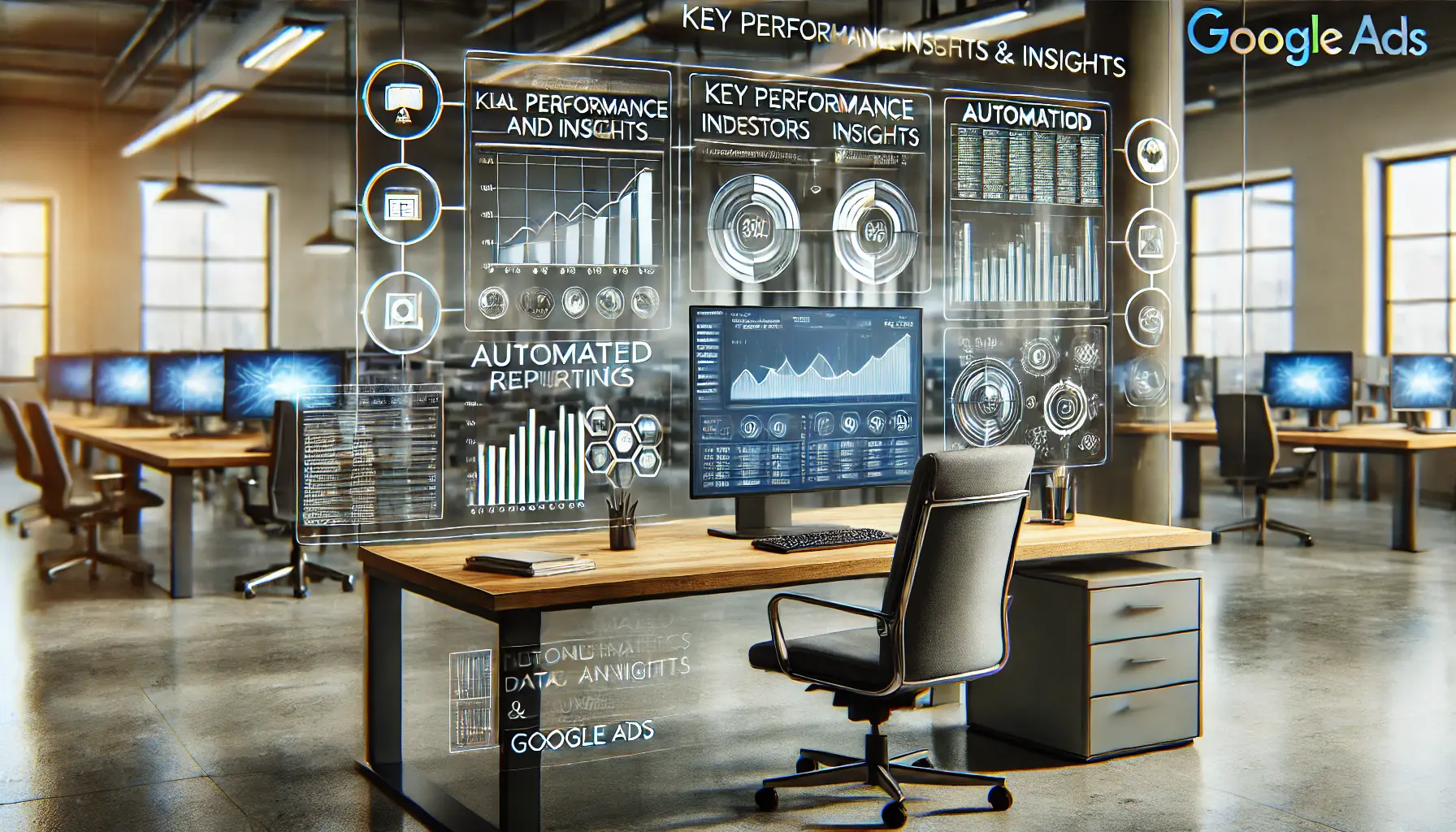
A high-tech workspace displaying automated reporting and real-time insights in Google Ads, highlighting the efficiency of data-driven analytics.
Automated Reporting and Insights
To make data-driven decisions, it’s crucial to have access to detailed insights.
Google Ads’ automated reporting tools simplify this by generating reports that highlight key metrics, trends, and areas for improvement.
Features like the Insights Page and automated reports allow marketers to access actionable data without having to manually analyze it.
- Insights Page: Provides performance trends, consumer demand insights, and competitive analysis, helping marketers quickly adjust their strategies.
- Automated Reports: Google Ads automatically generates performance reports and sends them to your email or dashboard, keeping you up-to-date without manual effort.
These automated solutions help streamline every aspect of your Google Ads campaigns—from bidding and ad creation to optimization and reporting.
By incorporating these tools into your strategy, you can maximize efficiency and increase your return on investment.
Smart Bidding strategies like Target CPA and Target ROAS are among the most effective automation tools in Google Ads.
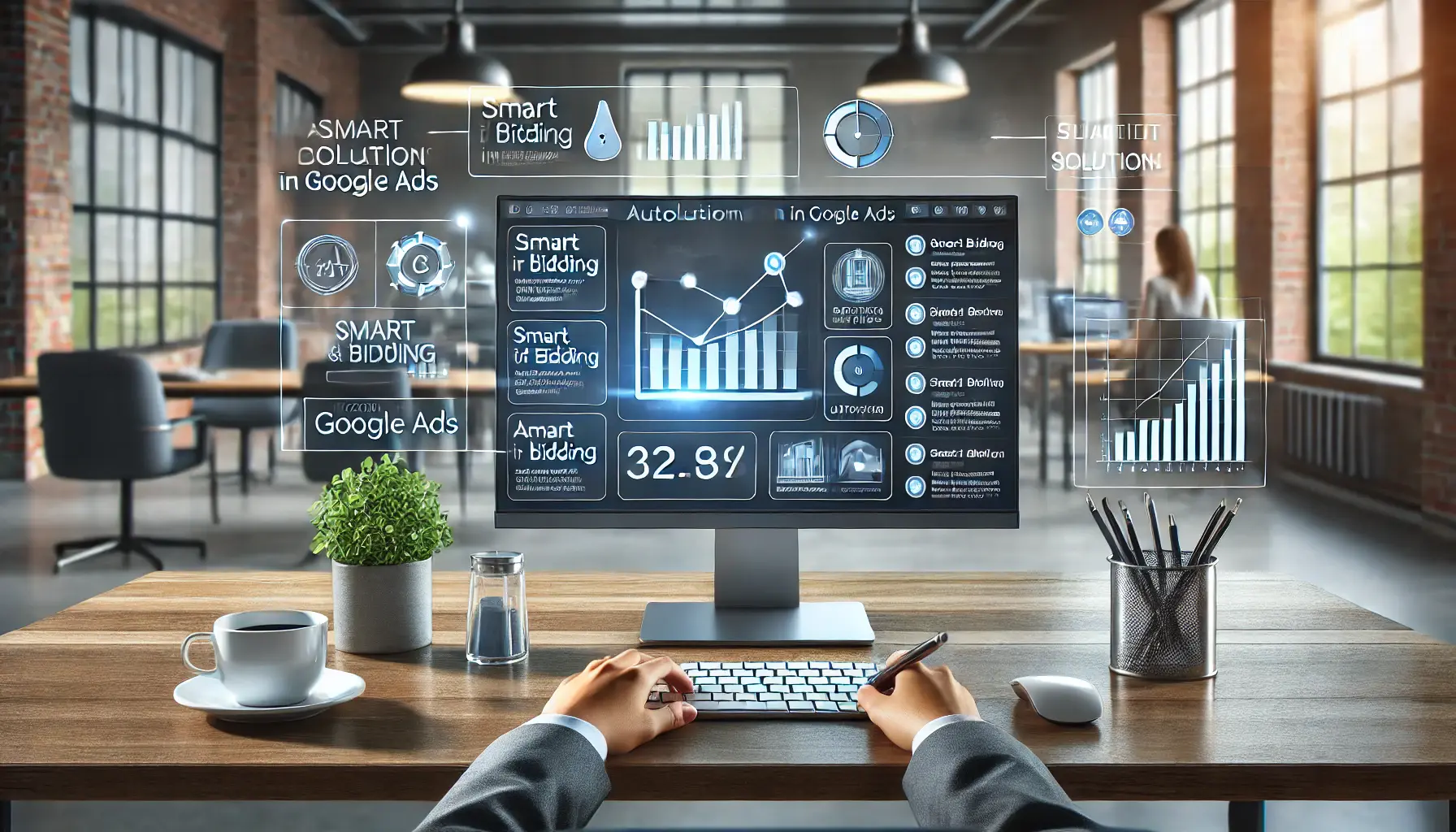
A modern workspace showcasing the process of deploying automated solutions in Google Ads, focusing on campaign setup and strategic decision-making.
How to Effectively Deploy Automated Solutions
The automated solutions in Google Ads can significantly boost performance and efficiency, but thoughtful deployment is key.
While automation simplifies many tasks, it is crucial to set the right parameters and monitor the results to maximize the potential of these tools.
Let’s explore how you can effectively use automated solutions in your Google Ads strategy.
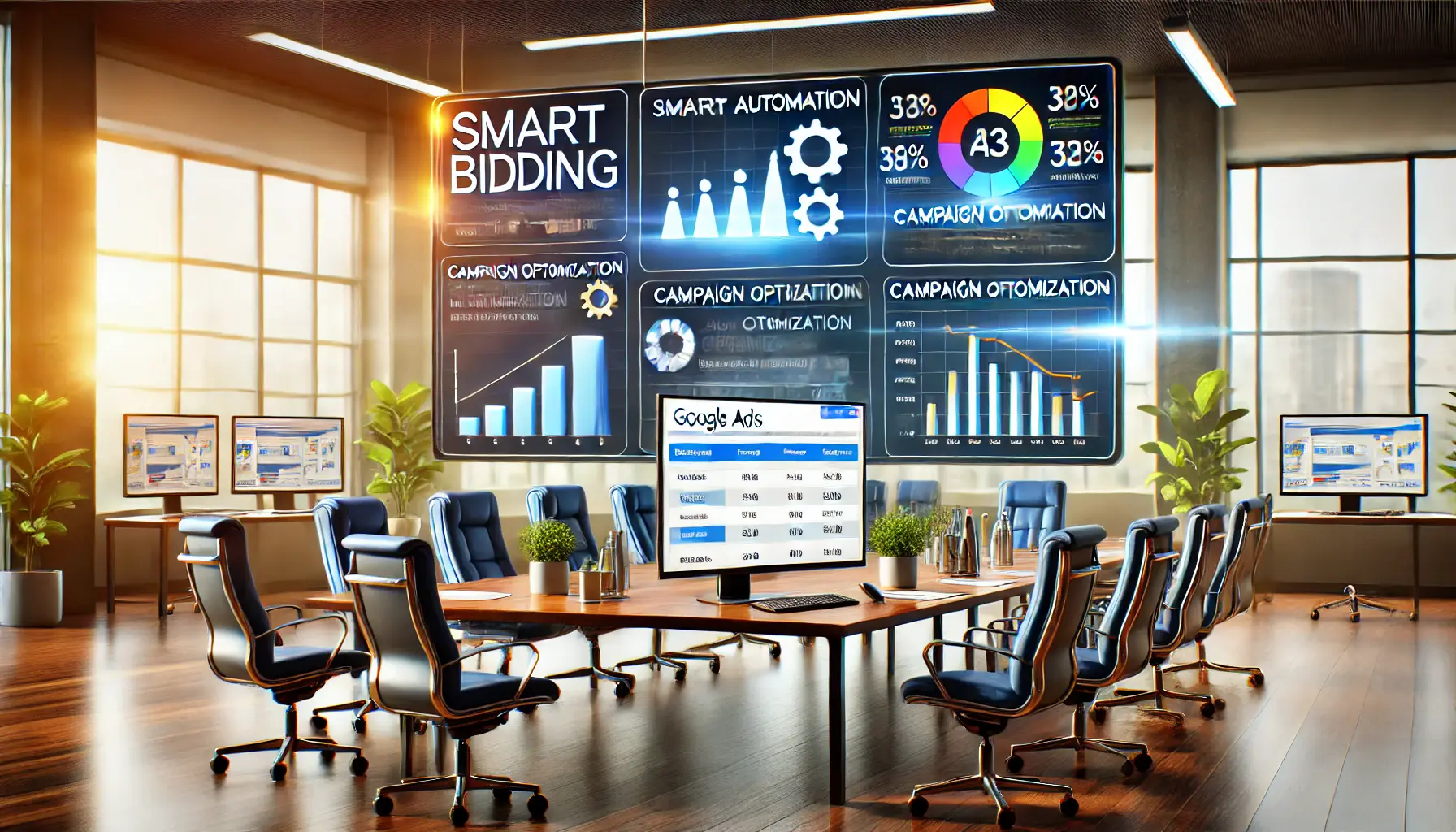
A modern digital marketing workspace highlighting the strategic selection of the right automation tools for optimizing Google Ads campaigns.
Choosing the Right Automation Tools
Not all automated tools are a good fit for every campaign goal.
Determining which tools align with your specific objectives is the first step in making automation work for you.
For example, if your goal is to drive conversions at a certain cost, Smart Bidding with Target CPA might be the best option.
If your focus is on scaling quickly, Maximize Conversions could be more appropriate.
It’s important to understand what each automated solution offers and select the one that fits your strategy.
- Match automation tools with campaign goals: First, define your objective—whether it’s maximizing conversions, return on ad spend (ROAS), or impressions—and choose the tool that best aligns with that goal.
- Leverage different tools for different stages: During the growth phase, Maximize Clicks may help generate traffic, while later on, Target ROAS could focus on driving profitability.
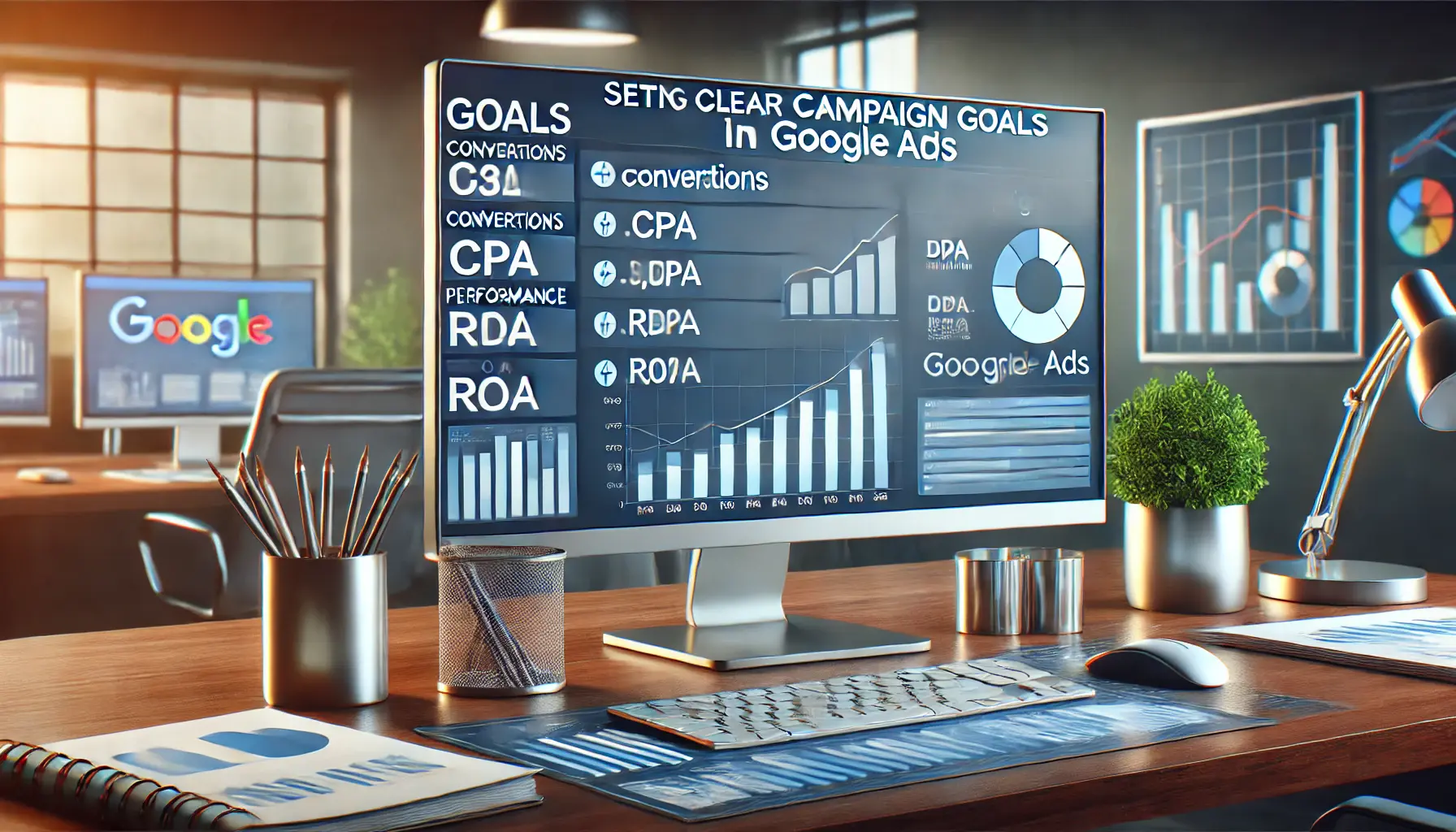
A modern digital marketing workspace emphasizing the importance of setting clear campaign goals in Google Ads, with performance data tracking.
Setting Clear Campaign Goals
Automation works best when the goals of your Google Ads campaign are clearly defined.
Without specific targets, automated solutions cannot optimize for the best performance.
Defining metrics like conversion rate, cost per acquisition (CPA), or ROAS provides the system with the data it needs to make intelligent decisions.
- Clearly define KPIs: Set measurable objectives for your campaign, such as increasing conversions by 10% or achieving a CPA of $50.
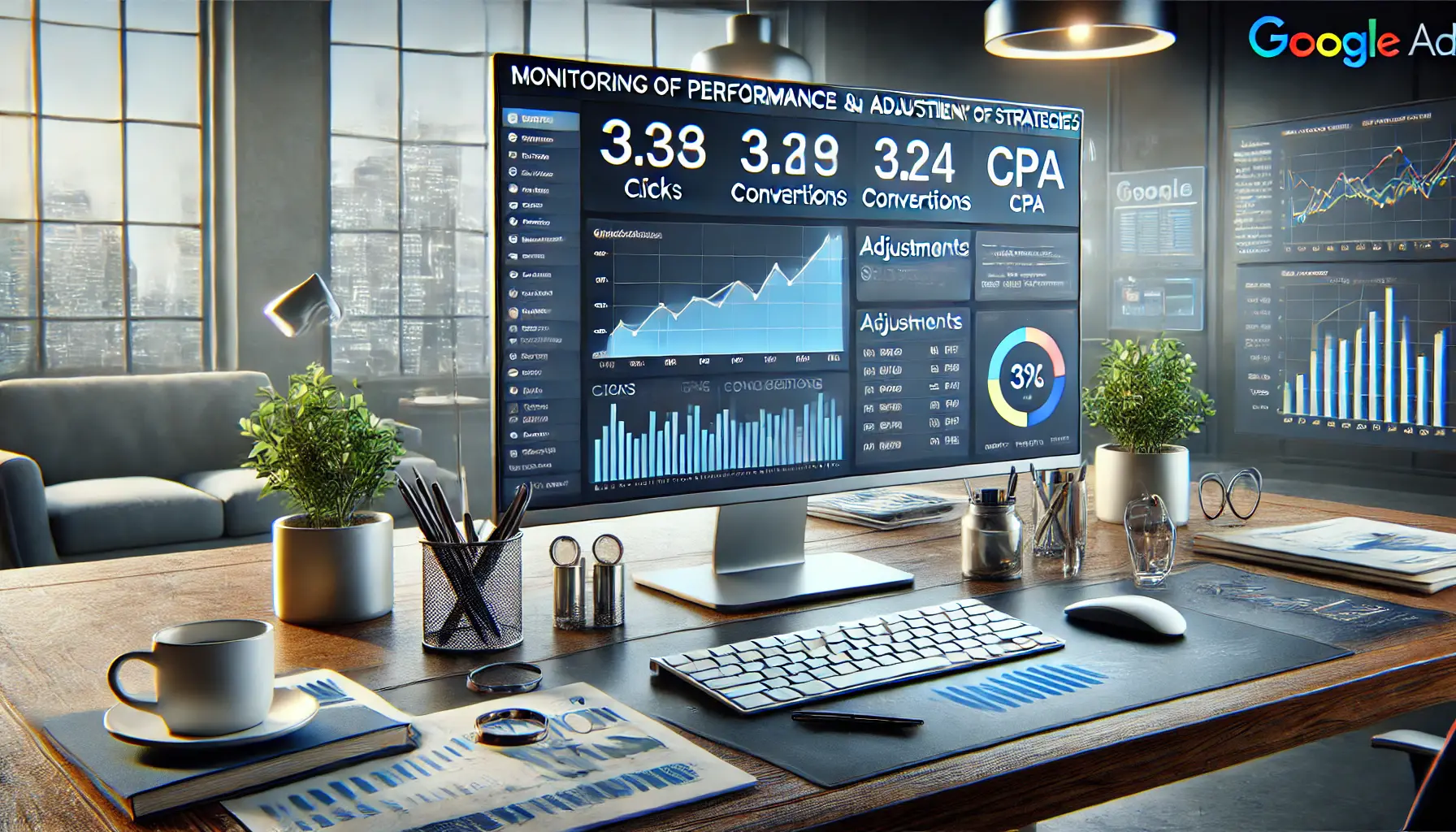
A high-tech workspace focused on monitoring performance and adjusting strategies in Google Ads, featuring real-time data and optimization tools.
Monitoring Performance and Adjusting Strategies
Even automated solutions require periodic monitoring and adjustments.
Regularly reviewing performance data and tweaking your approach ensures that your campaigns continue to improve over time.
- Report performance: Use Google Ads’ automated reporting to monitor performance and identify areas where the strategy may need adjustment.
- Test and iterate: Continuously test different settings, from bid strategies to ad copy, and refine your approach based on what works best.
Automating your Google Ads campaigns is a powerful way to enhance performance, but it’s not a one-size-fits-all solution.
By selecting the right tools, setting clear goals, and closely monitoring performance, you can make automation work effectively for your business.
Choosing the right automated tools based on your campaign goals is crucial for maximizing the effectiveness of Google Ads automation.
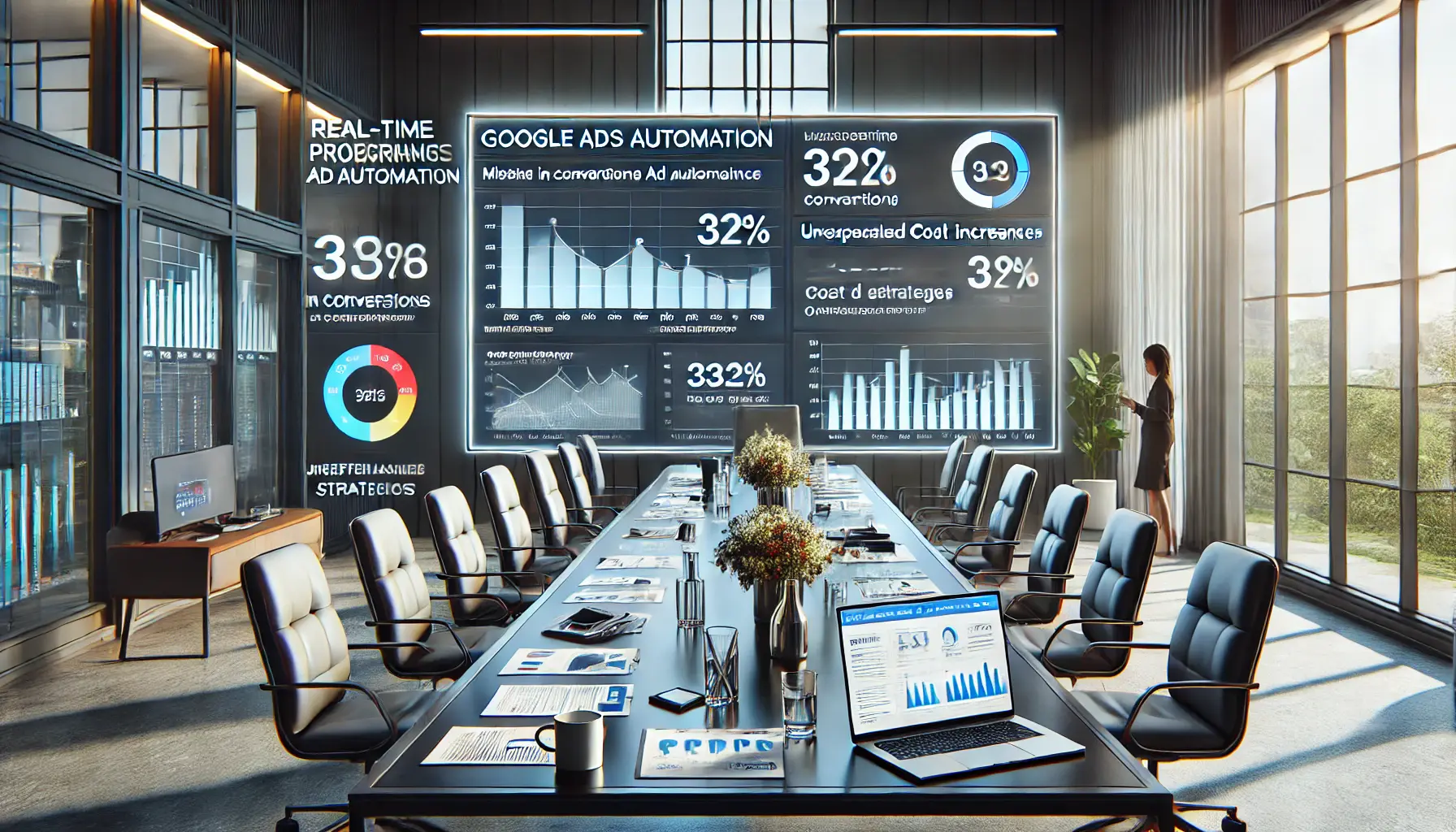
A high-tech workspace highlighting the challenges and pitfalls of Google Ads automation, with performance data showing potential issues in ad campaigns.
Challenges and Pitfalls of Google Ads Automation
Automation in Google Ads comes with numerous advantages, but it is also not without its drawbacks and potential pitfalls.
Understanding the limitations and the most frequent mistakes of automated solutions helps avoid wasting resources and ensures that campaigns perform at their full potential.
Let’s dive into the principal challenges and how to overcome them to fully take advantage of your automated solutions.
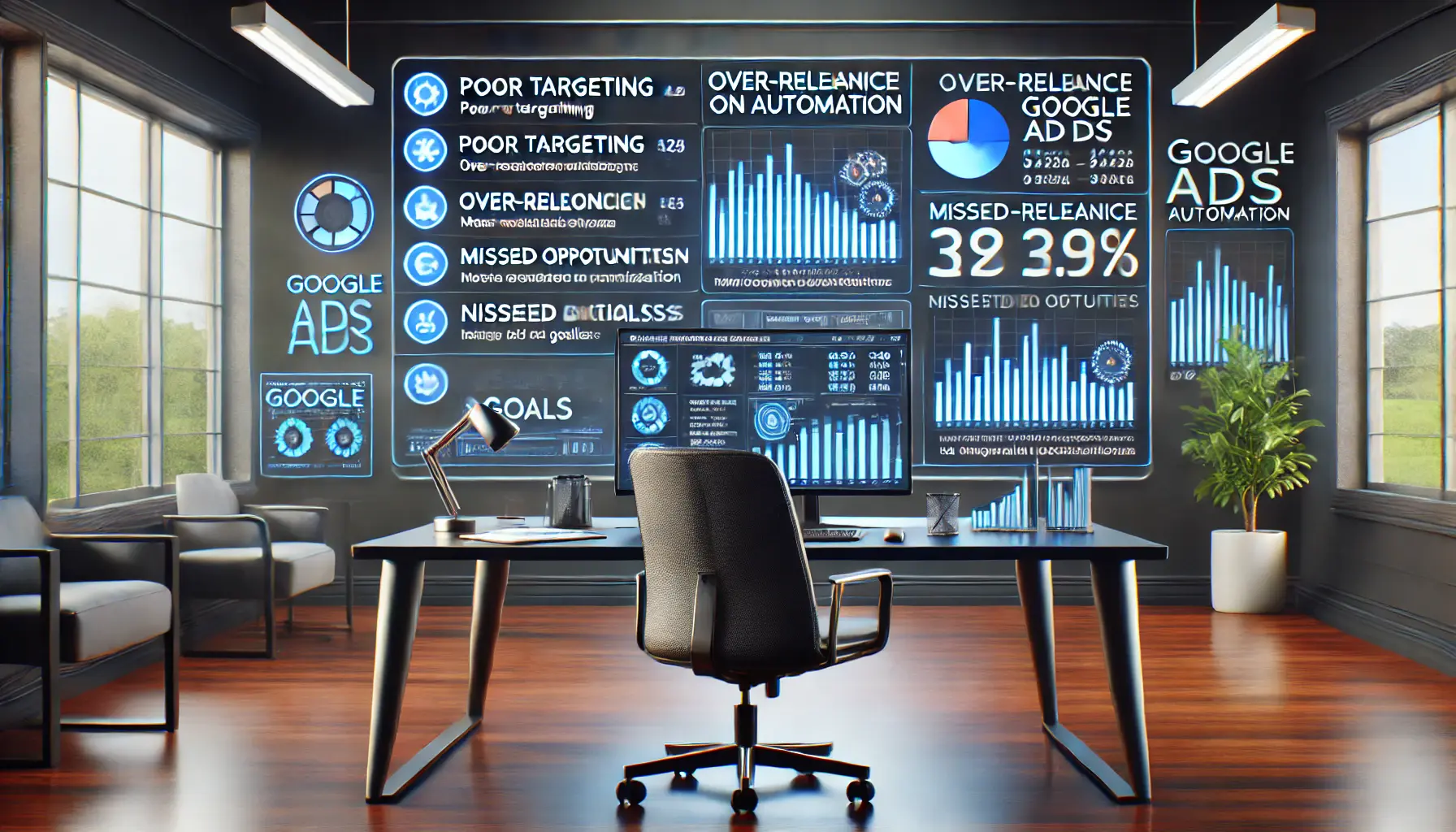
A high-tech workspace illustrating common mistakes in Google Ads automation, such as over-reliance on automation and neglecting manual adjustments.
Common Mistakes in Automation
One of the most common problems with automation is over-reliance on the system without truly understanding the finer points of managing a campaign.
The trap many marketers fall into is the ‘set it and forget it’ mindset, believing the automated tool will do all the work.
While automation simplifies many processes, it still requires oversight to ensure alignment with your overall strategy.
- Not setting proper goals: Automation works best when you have clearly defined goals. Without setting specific targets like CPA or ROAS, the system may underperform.
- Neglecting manual adjustments: Even with automated tools, manual adjustments are necessary to adapt to changing market conditions or unexpected events.
- Ignoring negative keywords: Automated campaigns can waste budget on irrelevant searches. Regularly update your negative keyword lists to avoid this issue.

A high-tech workspace illustrating the risks of over-reliance on automated solutions, with performance metrics showing stagnation and missed optimization opportunities.
Over-Reliance on Automated Solutions
Over-reliance on automation can be counterproductive, especially when creativity and human insight are essential to achieving the best possible outcomes.
For example, using automated bidding to drive efficiency might not deliver optimal returns if your ad creative or targeting does not align with your goals.
Striking a balance between automation and manual intervention is key.
- Lack of creative control: Automation cannot replace creativity. It’s crucial to continuously assess and refine your ad copy and creatives to make them stand out.
- Performance plateaus: Automated campaigns can sometimes hit a point where improvements become negligible. Regular reviews and creative adjustments are necessary to break through these barriers.
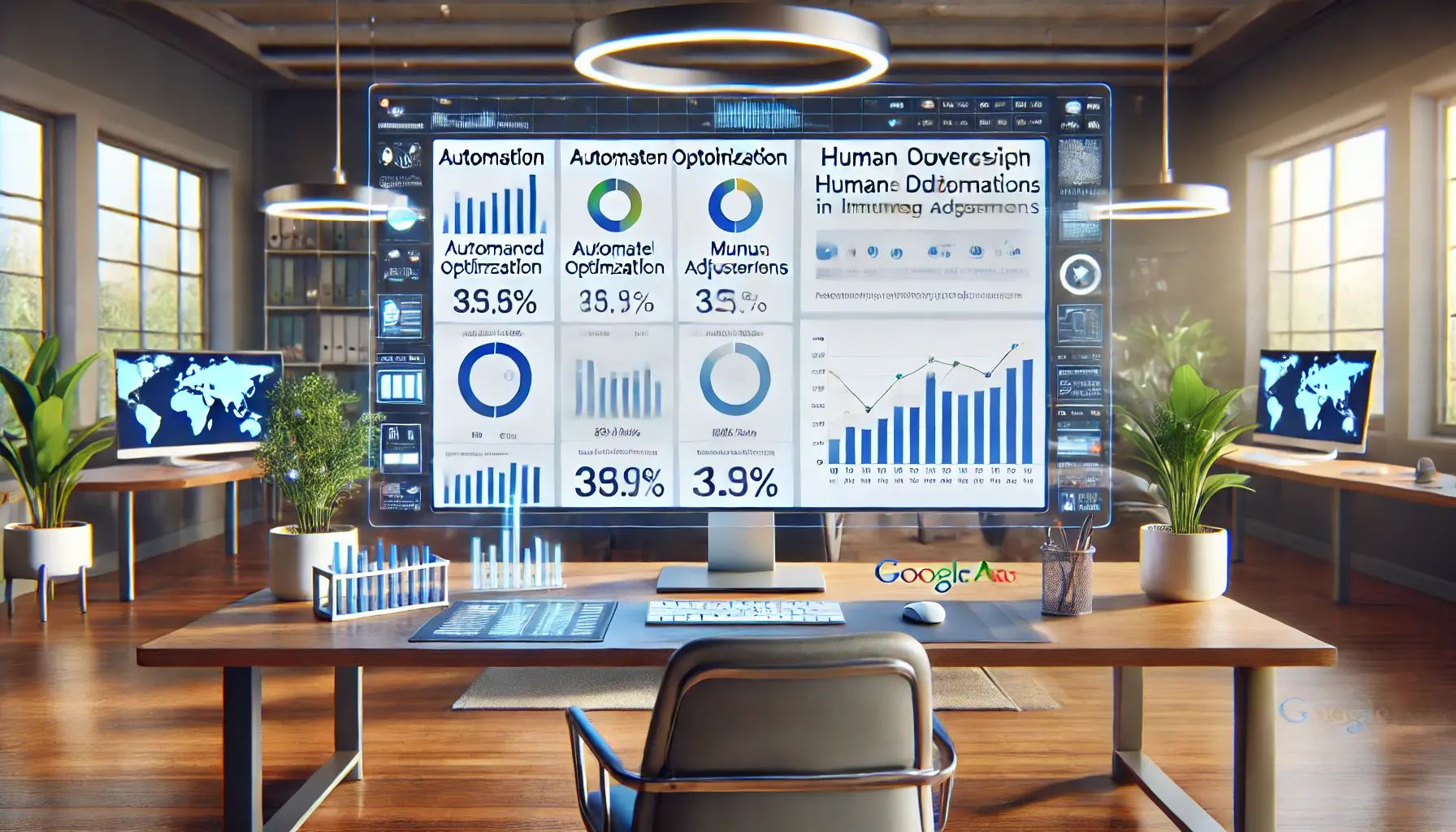
A high-tech workspace illustrating the balance between automation and human oversight in Google Ads, with tools for both real-time data analysis and manual adjustments.
Balancing Automation with Human Oversight
The key to successful automation in Google Ads is finding the right balance between automated solutions and human oversight.
Automated tools are excellent for handling repetitive tasks like bidding and reporting, but human involvement is needed to fine-tune campaigns, make strategic adjustments, and ensure alignment with broader business goals.
- Regular audits: Periodically audit your automated campaigns to ensure they continue to deliver on your KPIs.
- Adjust strategies as needed: Automation enhances, but does not replace, human decision-making. Tailor your strategies to your unique market conditions and evolving goals.
- Long-term strategy: While automation handles day-to-day tasks, maintaining a long-term strategy to guide your campaign goals and creativity is essential.
In summary, although automation within Google Ads provides greater scale and efficiency, marketers should still be hands-on with their campaigns.
Balancing automated solutions with human supervision yields the best results, helping you avoid common pitfalls and optimize performance.
Over-reliance on automation without proper oversight can lead to missed opportunities and underperforming campaigns.
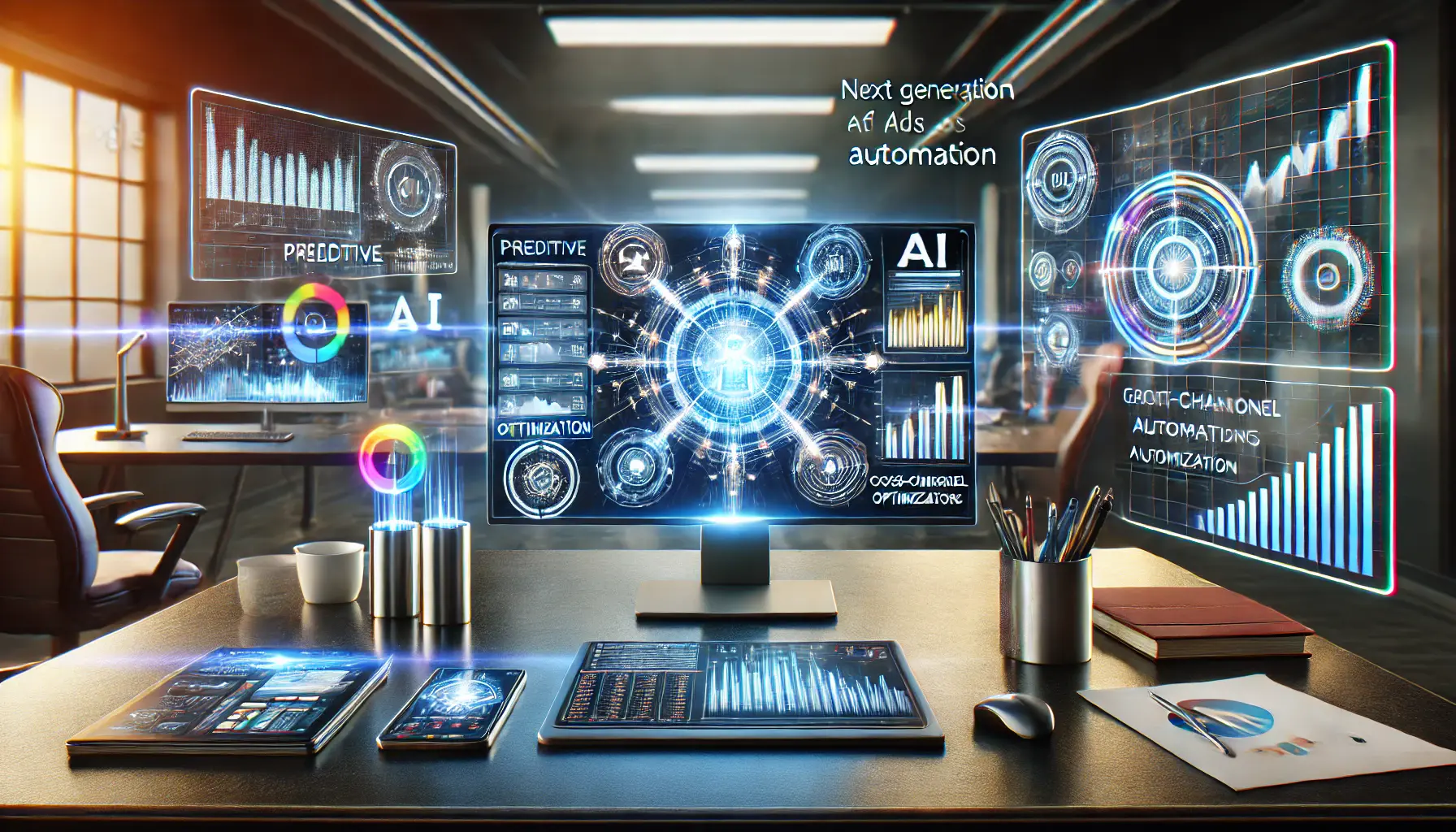
A forward-looking digital marketing workspace showcasing the next generation of Google Ads automation with AI, machine learning, and cross-channel optimization tools.
Future Trends in Google Ads Automation
As automation continues to evolve, Google Ads is emerging as one of the most intelligent platforms due to its integration with advanced technologies such as AI and machine learning (ML).
These advancements represent the future of digital advertising, allowing businesses to optimize campaigns in innovative ways and deliver highly personalized user experiences.
Let’s explore some of the key future trends in Google Ads automation.
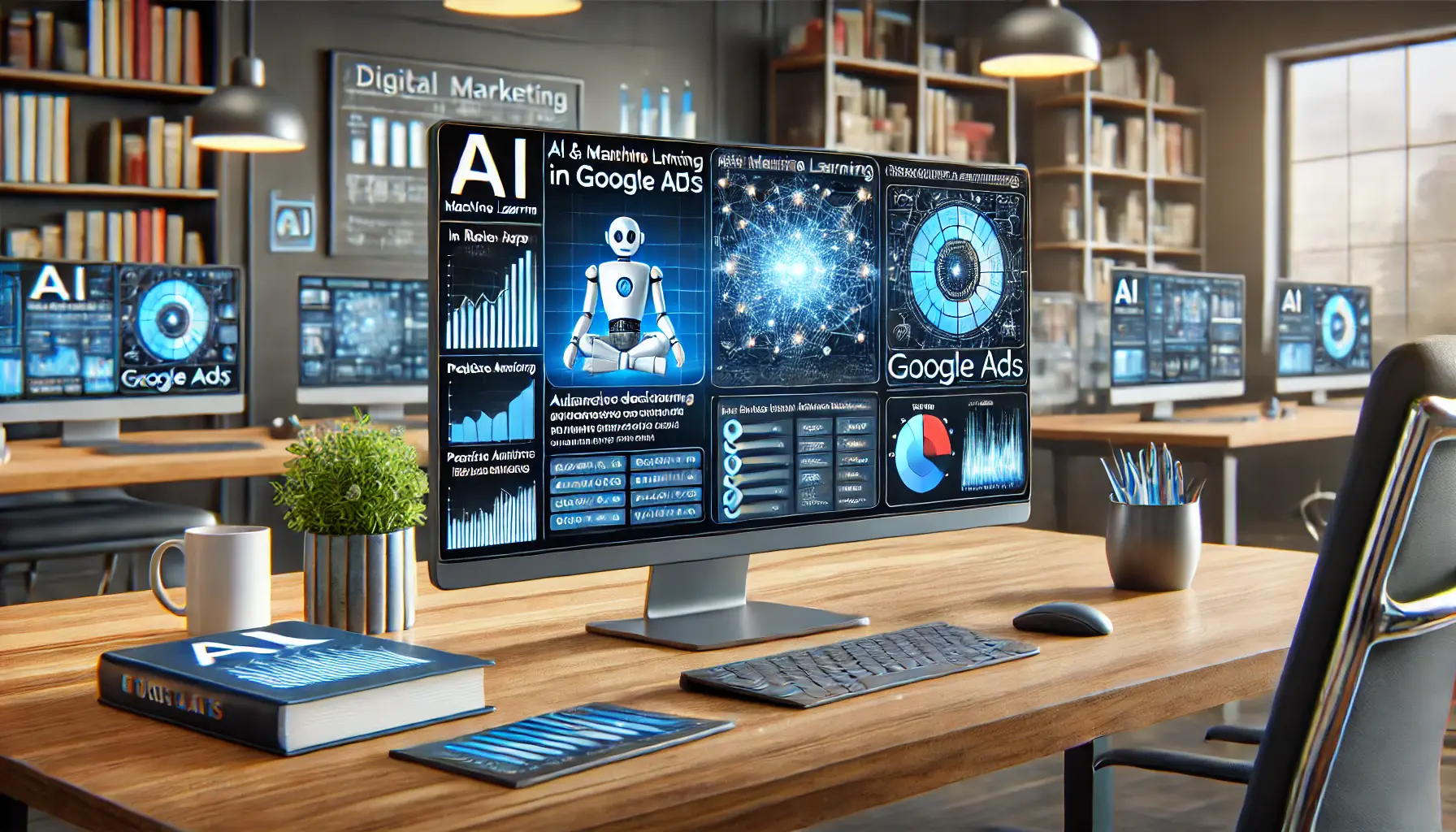
A high-tech workspace showcasing the role of AI and machine learning in optimizing Google Ads campaigns through predictive analytics and automated decision-making.
AI and Machine Learning in Google Ads
AI and machine learning have already begun transforming Google Ads automation by making campaign management more intelligent and data-driven.
These technologies enable Google Ads to process vast amounts of data in real-time, optimizing ad performance based on user behaviors and trends.
With AI, Google Ads can predict which users are most likely to convert and adjust bids, placements, and creatives accordingly.
- Predictive Bidding: AI-powered algorithms predict a user’s likelihood of converting and automatically optimize bids in real-time for maximum ROI.
- Creative Personalization: Machine learning allows for more precise personalization of ad creatives, tailoring messages and visuals to different audiences.
- Smart Campaigns: Google’s Smart Campaigns heavily leverage AI, enabling businesses to automate everything from bidding to ad creation while continuously optimizing for improved results.
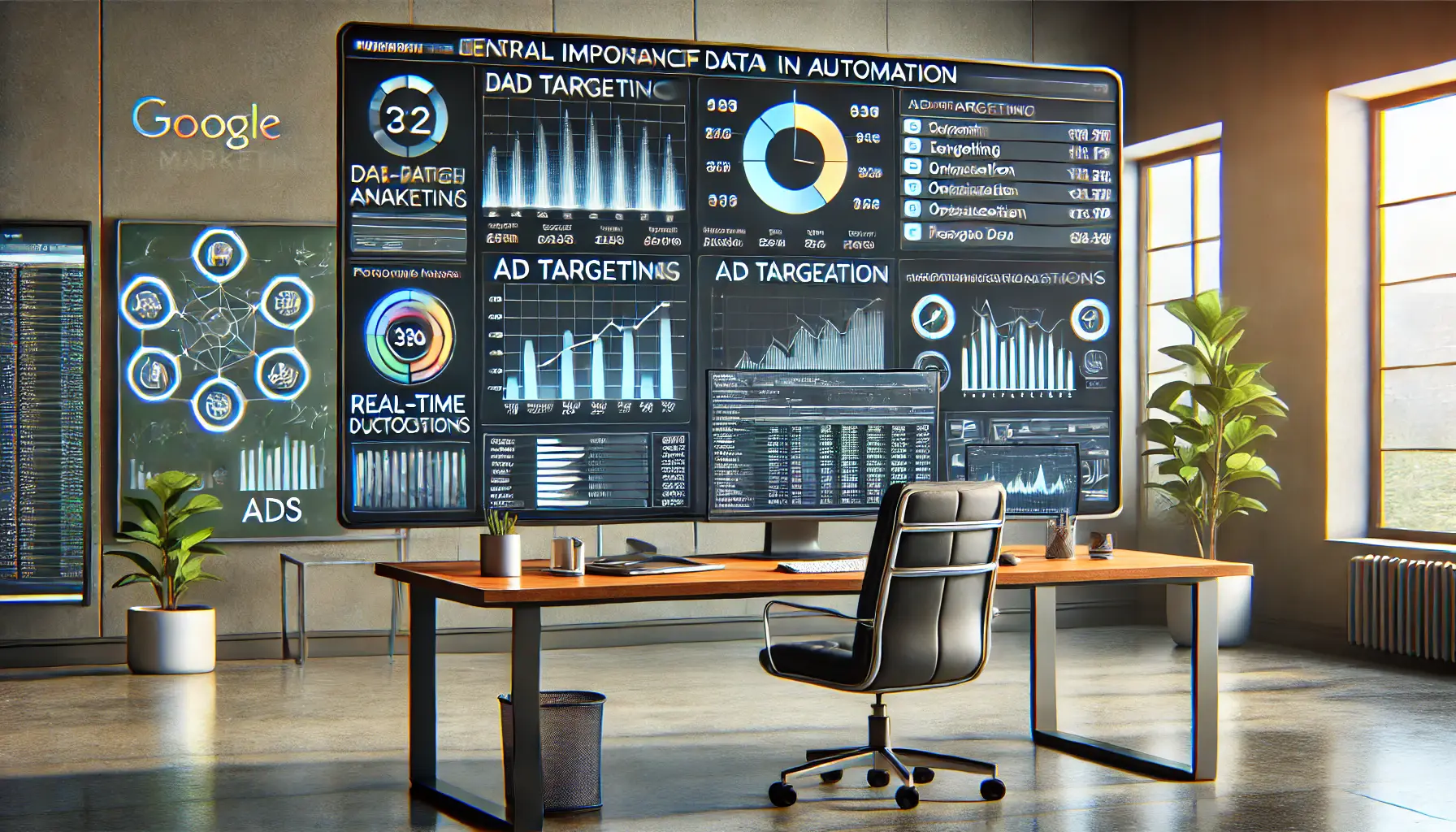
A high-tech workspace illustrating how data drives automation in Google Ads, with real-time metrics and analytics optimizing campaign performance.
The Role of Data in Automation
Data is at the heart of Google Ads automation, and its importance will only grow in the future.
As privacy regulations evolve and third-party cookies are phased out, first-party dataData collected directly by a business from its customers, such as email addresses, purchase history, and behavior on the business's website. will become a valuable asset for marketers.
This shift requires advertisers to develop strong data collection strategies and ensure they are using this data effectively within their automated campaigns.
- First-party data integration: As third-party cookies disappear, integrating first-party data into Google Ads will allow for precise targeting and campaign optimization.
- Privacy-focused automation: Google is focusing on privacy-friendly solutions, using AI and aggregated data to maintain targeting effectiveness while respecting user privacy.
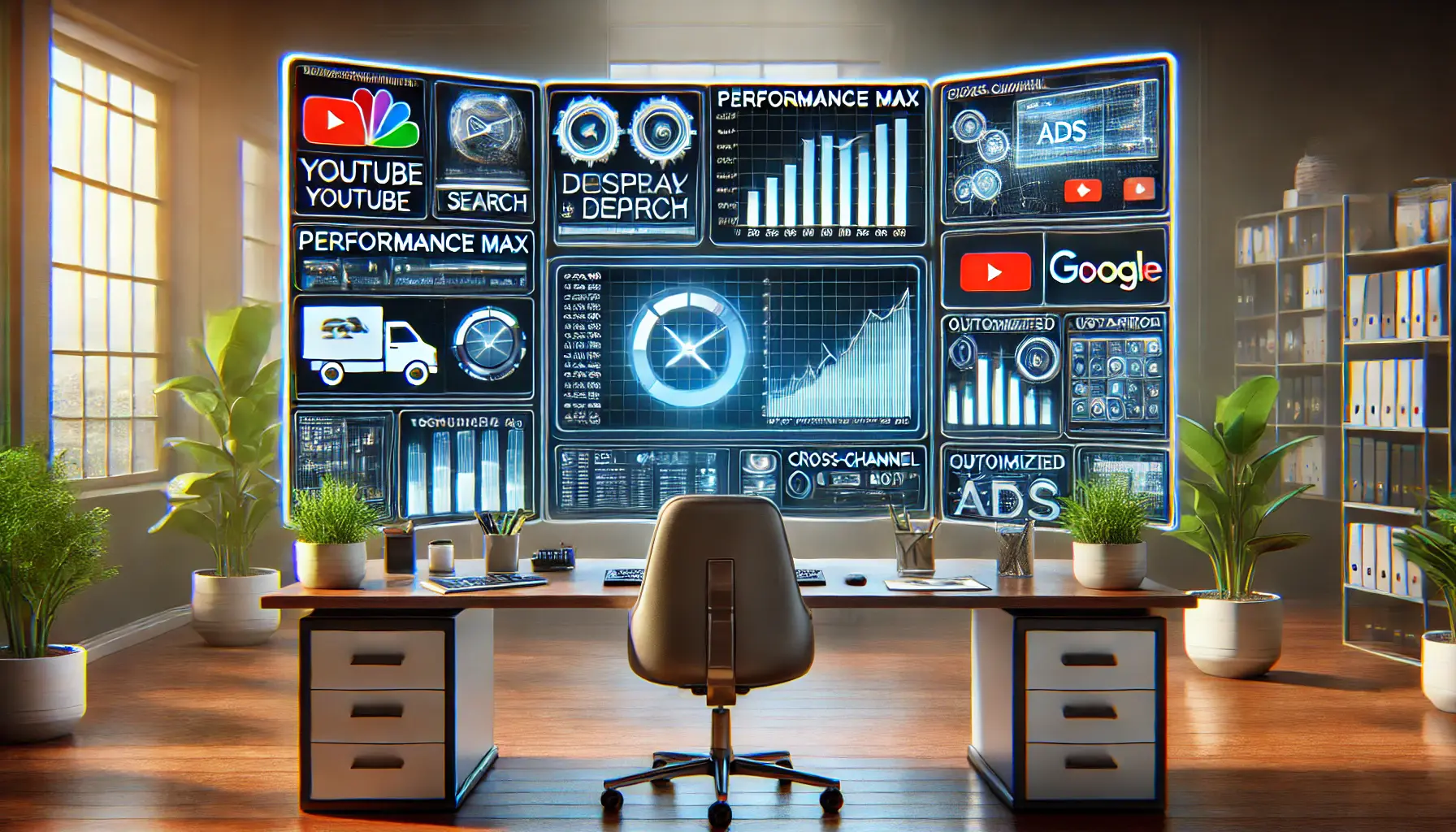
A modern digital marketing workspace highlighting Performance Max and cross-channel campaigns in Google Ads, optimizing performance across multiple platforms.
Performance Max and Cross-Channel Campaigns
Performance Max campaigns are becoming increasingly popular, offering a fully automated, goal-based approach to advertising.
These campaigns allow advertisers to access all of Google’s ad inventory from a single campaign and leverage machine learning to optimize across multiple channels, such as YouTube, Display, Search, and Gmail.
As cross-channelA marketing approach that involves running campaigns across multiple platforms or channels, such as YouTube, Search, and Display. advertising becomes more automated and seamless, Performance Max campaigns will play a critical role in digital advertising strategies.
- Cross-channel optimization: Performance Max campaigns use machine learning to determine the optimal mix of channels for your ads, maximizing performance across all Google platforms.
- Advanced automation: Expect more sophisticated automation to handle creative generation, audience targeting, and bid optimization across multiple platforms simultaneously.
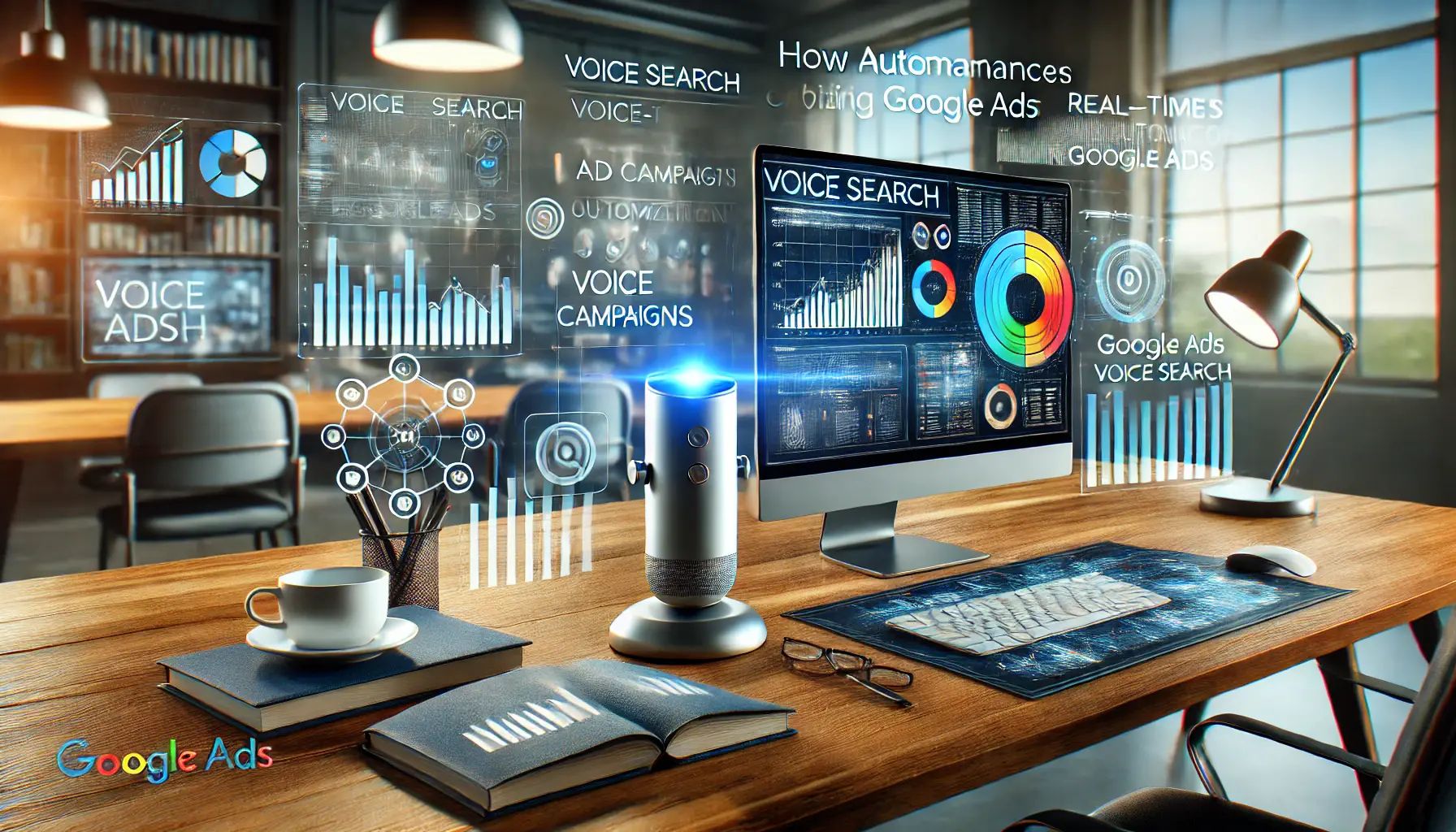
A modern digital marketing workspace showcasing the integration of voice search and automation in Google Ads, with real-time data processing for voice queries.
Voice Search and Automation
As voice search gains momentum, Google Ads will likely update its automation capabilities to cater to voice-activated queries.
With more consumers using voice assistants like Google Assistant, businesses need to optimize their strategies for voice search results.
Automation will be key in ensuring that ads are relevant for these types of queries.
- Optimize for voice search: As voice search grows, Google Ads will build automation that allows businesses to optimize their ads for voice-based queries.
- AI-powered ad placement for voice searches: AI helps determine how and where voice search ads can be most effective, strategically placing them in search results or audio content.
As technologies like AI, machine learning, and data integration continue to evolve, businesses that embrace these trends will stay ahead of the curve, running highly personalized and efficient campaigns through Google Ads automation.
AI and machine learning are transforming Google Ads, making it more intelligent and capable of delivering highly personalized campaigns.
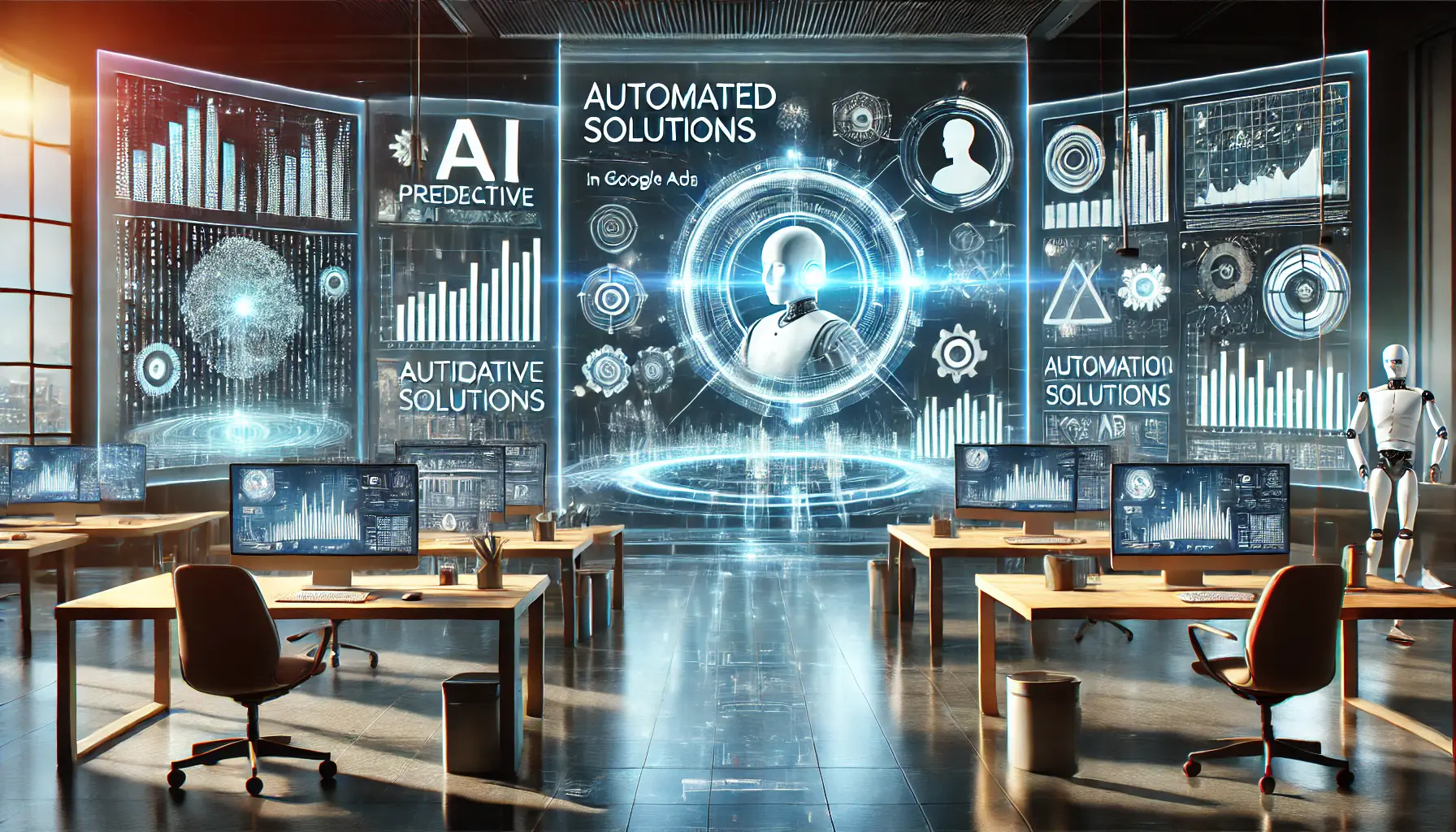
A forward-looking digital marketing workspace showcasing the future of Google Ads through advanced AI and automation solutions optimizing ad performance.
Automated Solutions: The Future of Google Ads
With continuous development in digital marketing technologies, businesses today are increasingly turning to automated solutions in Google Ads for greater competitiveness.
Advanced technologies, such as AI and machine learning, are becoming integral to campaign management, enabling marketers to optimize performance and achieve higher returns on investment with far greater efficiency than ever before.
However, to fully leverage these automated solutions, careful planning, monitoring, and human oversight are essential.
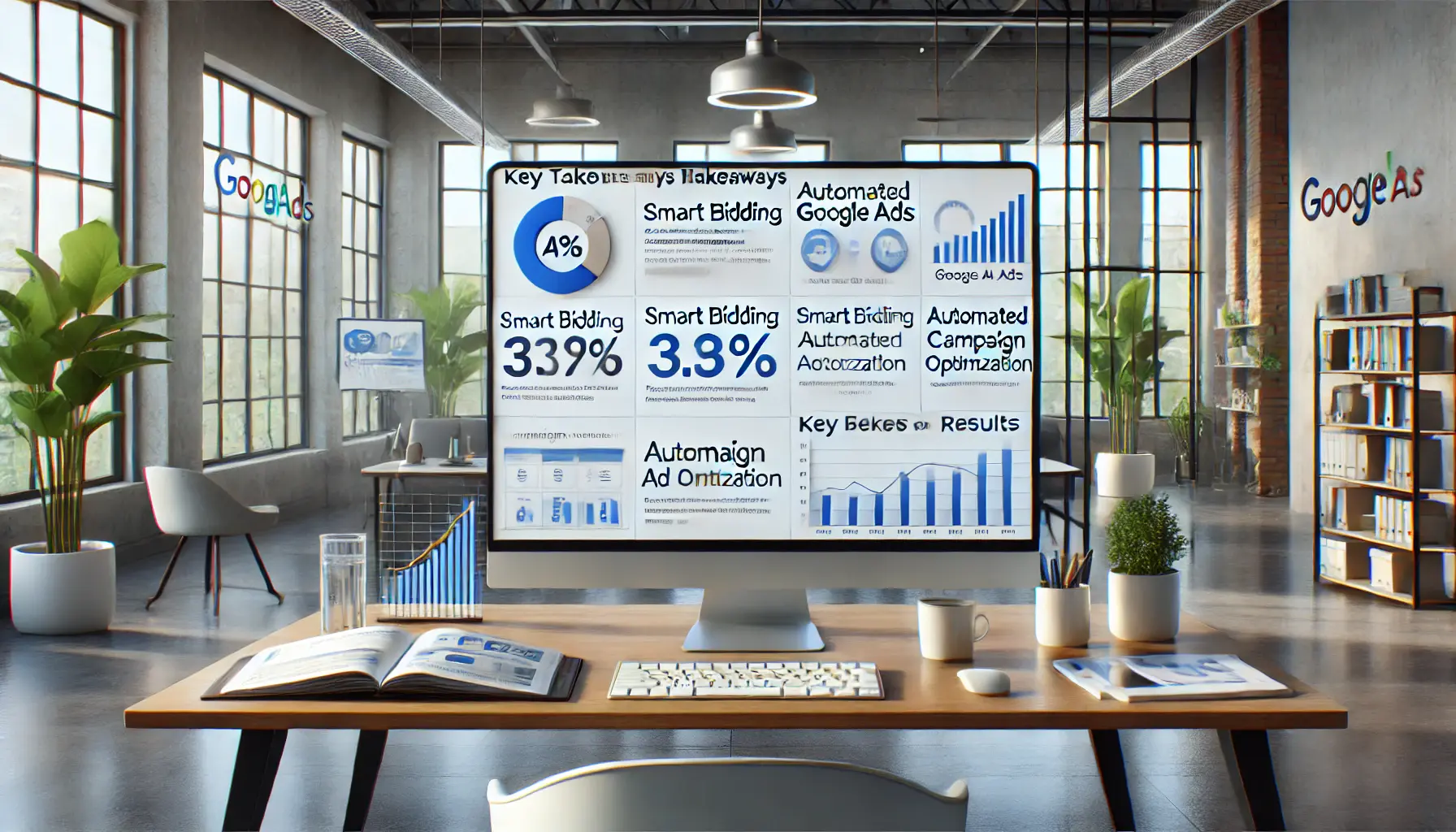
A professional workspace showcasing the key benefits of automating Google Ads, including smart bidding, ad creation, and optimization tools that enhance campaign performance.
Key Takeaways from Google Ads Automation
Throughout this article, we have explored various automated solutions available in Google Ads, how to use them effectively, the challenges you may encounter, and the promising future trends shaping this platform.
Here are some key takeaways:
- Automated bidding strategies: Use Smart Bidding tools like Target CPA and Maximize Conversions to automatically set optimized bids in real time, driving efficient results aligned with campaign goals.
- Creative automation: Take advantage of ad formats like Responsive Search Ads and Dynamic Search Ads, which offer personalized ad content by dynamically creating variations for different audiences and campaigns.
- Data-driven decisions: The importance of data, especially first-party data, will continue to grow as privacy regulations evolve. Accurate targeting and optimization will be crucial for advertisers.
- Cross-channel automation: Performance Max campaigns allow businesses to target audiences across various Google platforms, making cross-channel optimization simpler and more effective.
- Voice search readiness: As voice search grows, automating ad strategies becomes essential to address the demands of voice-activated queries, ensuring relevance and visibility.

A professional digital marketing workspace showcasing best practices for Google Ads automation, with tools for smart bidding, goal setting, and optimized campaign performance.
Google Ads Automation Best Practices
There are several best practices to consider when using Google Ads automation to push performance to its optimal potential:
- Set clear goals: Automation works most effectively when clear goals, such as CPA or ROAS, are established from the start. This ensures the system is optimized for the desired outcomes.
- Regular monitoring: Even with automation, it’s crucial to periodically review performance and make manual adjustments to ensure your campaigns stay on track.
- Balancing automation with human oversight: Automation can handle much of the repetitive tasks, but creativity, strategy, and a human touch are necessary for long-term success.
- Leverage AI and machine learning: Utilize AI-driven tools to optimize bids, personalize creatives, and predict conversions, further enhancing the overall performance of your campaigns.
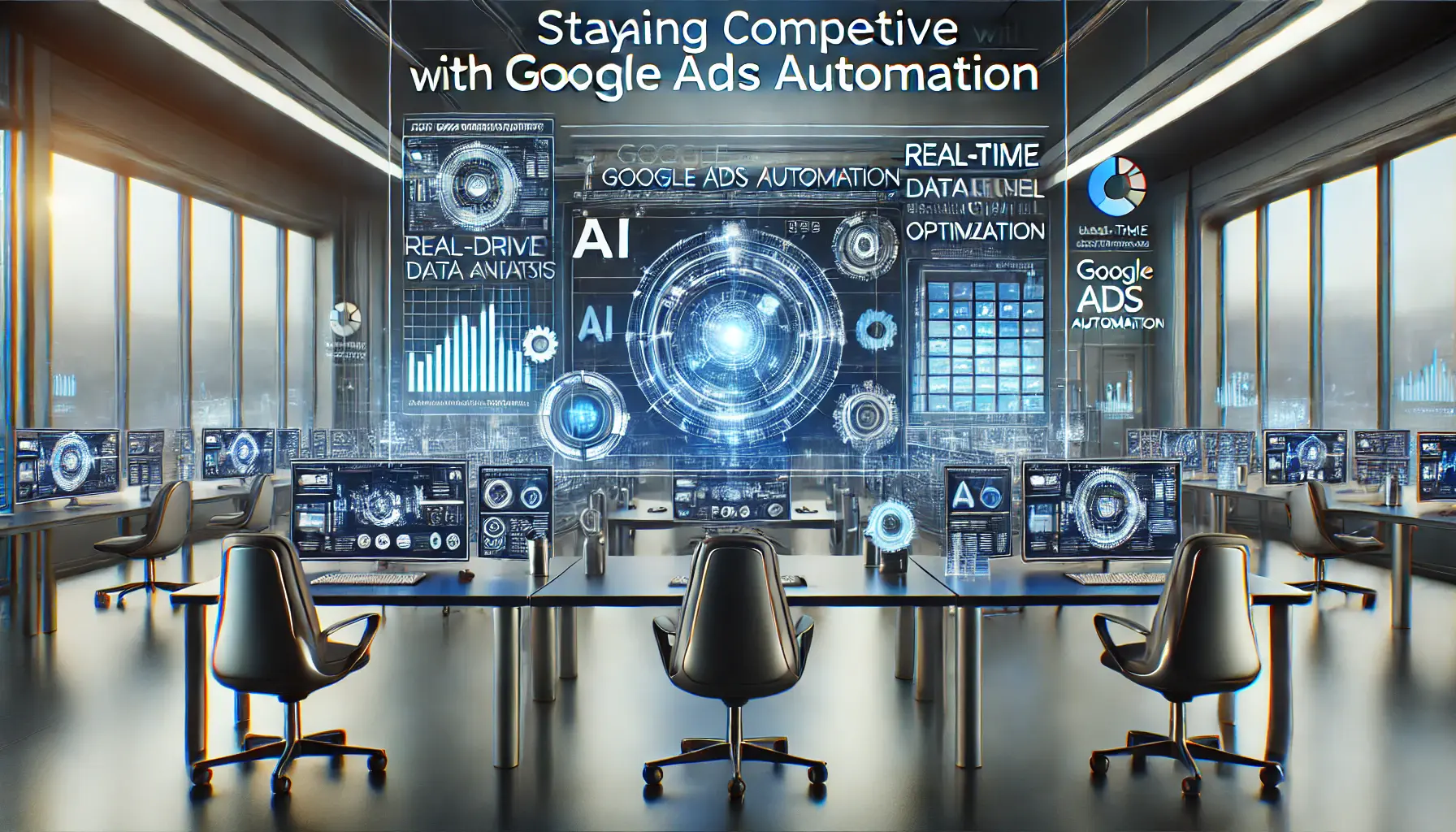
A forward-looking digital marketing workspace demonstrating how AI-driven automation and multi-channel optimization help businesses remain competitive with Google Ads.
The Future: Remaining Competitive with Google Ads Automation
As AI, machine learning, and data integration continue to evolve, businesses that adopt these automated solutions will maintain a competitive edge.
With trends like cross-channel campaigns and voice search optimization gaining momentum, integrating these technologies into your digital marketing strategy will be crucial.
By understanding the challenges, best practices, and future opportunities in Google Ads automation, marketers can unlock the full potential of their campaigns, delivering personalized, efficient, and high-impact results.
Whether you’re starting fresh with automation or refining existing campaigns, the future of Google Ads is full of possibilities for growth and success.
As AI-driven automation becomes more prevalent, businesses must adapt to stay competitive in the ever-evolving digital marketing landscape.
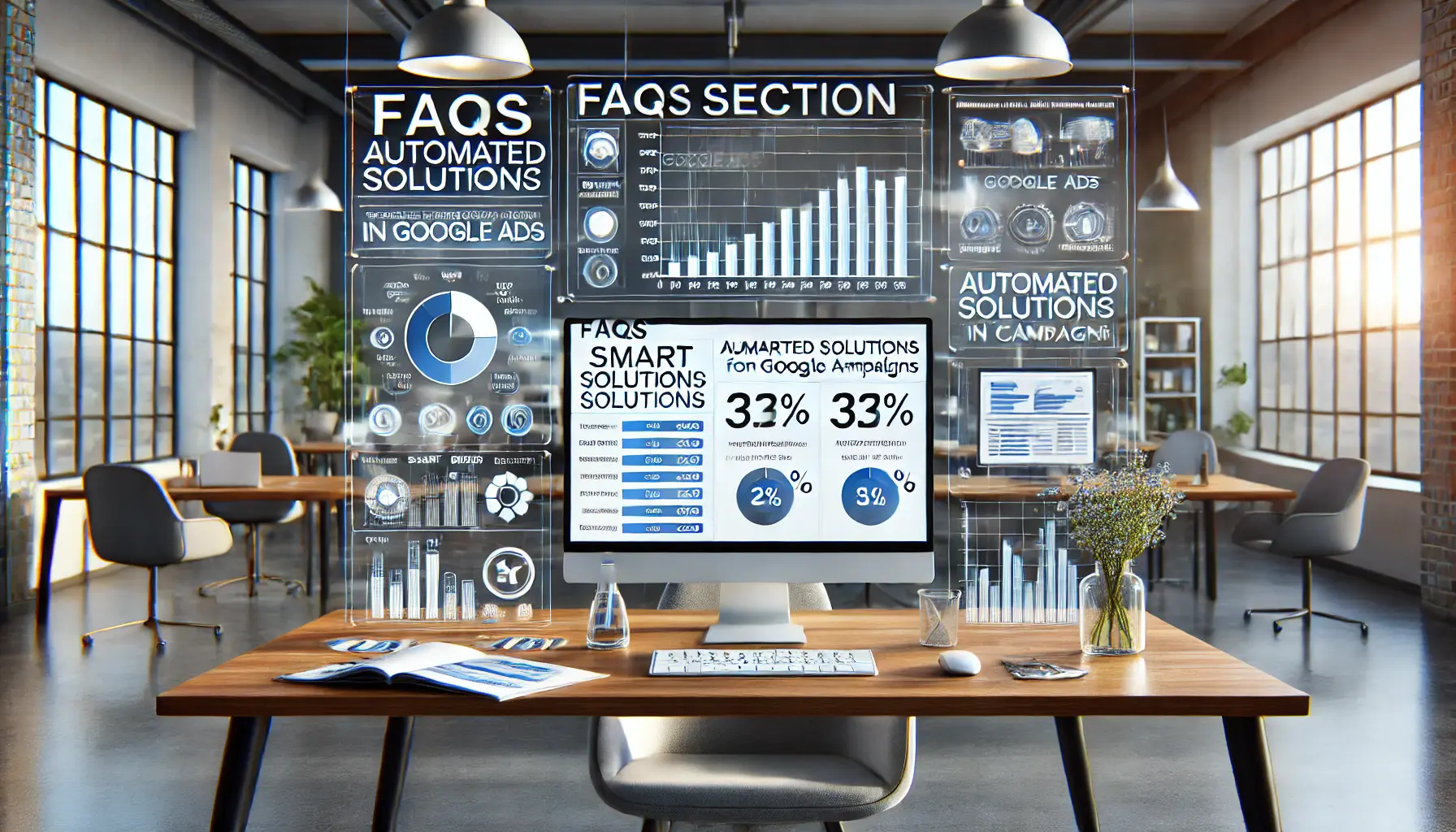
A clean and organized digital marketing workspace illustrating the practical applications of automated solutions in Google Ads, with performance metrics and campaign optimization tools.
Your campaigns can be managed by an agency specialized in Google Ads, check out our service page.
Automated Solutions in Google Ads: FAQs
Below are some of the most frequently asked questions regarding Google Ads automation and how businesses can make the most of these solutions.
Each response offers an overview of key concepts and best practices that should be considered when using automated solutions.
Automation boosts efficiency by allowing marketers to focus on strategy, while elevating return on investment through data-driven tools that enable real-time adjustments.
Automated bidding strategies use AI to dynamically adjust bids based on factors like user behavior and intent, helping advertisers achieve goals such as maximizing conversions or minimizing cost per acquisition (CPA).
No, Google Ads automation handles many tasks, but you remain in control of your goals, budgets, and strategies.
Manual adjustments and oversight help ensure automated solutions align with your overall marketing objectives.
First-party data can be added by uploading customer lists to Google Ads.
This allows advertisers to build customized targeting strategies, especially as third-party cookies are phased out due to evolving privacy regulations.
Smart Campaigns are automated campaign types designed for small businesses.
They help create ads, set bids, and target audiences based on business goals, offering a simple way to manage campaigns effectively.
AI in ad creative automation enables personalization for different audiences.
Machine learning optimizes headlines, descriptions, and visuals for performance, ensuring ads are more effectively targeted to meet diverse user needs.
To optimize for voice search, use natural language and conversational keywords.
Ensure that ads are relevant to common voice queries and leverage AI tools to place ads in strategic voice search results.
Yes, businesses of all sizes can benefit from Google Ads automation.
Small businesses can simplify campaign management, while larger enterprises can scale by automating tasks such as bidding and reporting.
Performance Max is a goal-based campaign type that gives advertisers access to all of Google’s ad inventory through a single campaign, leveraging AI and machine learning for optimal performance across multiple channels.
